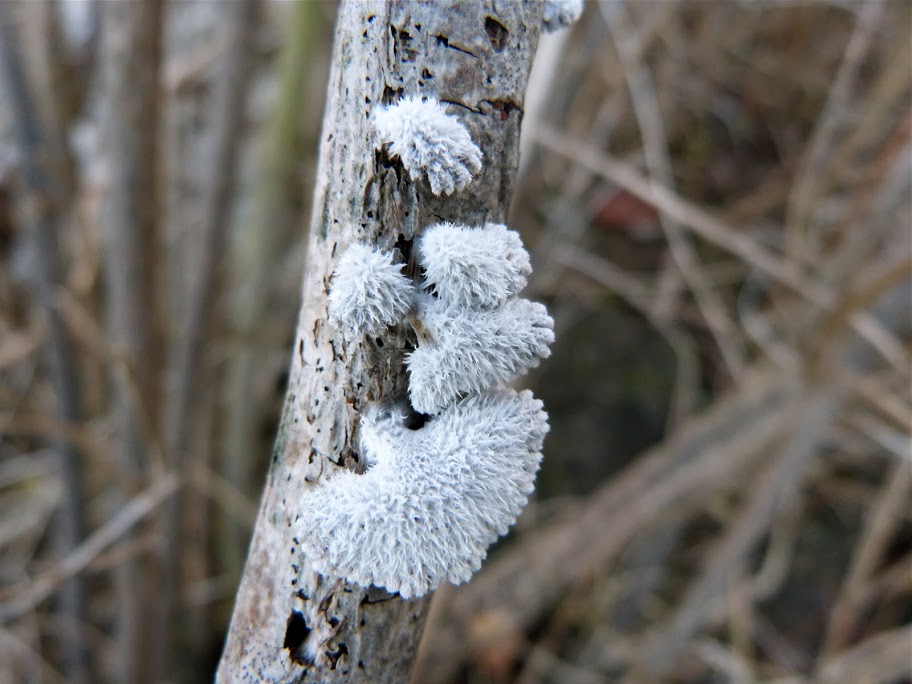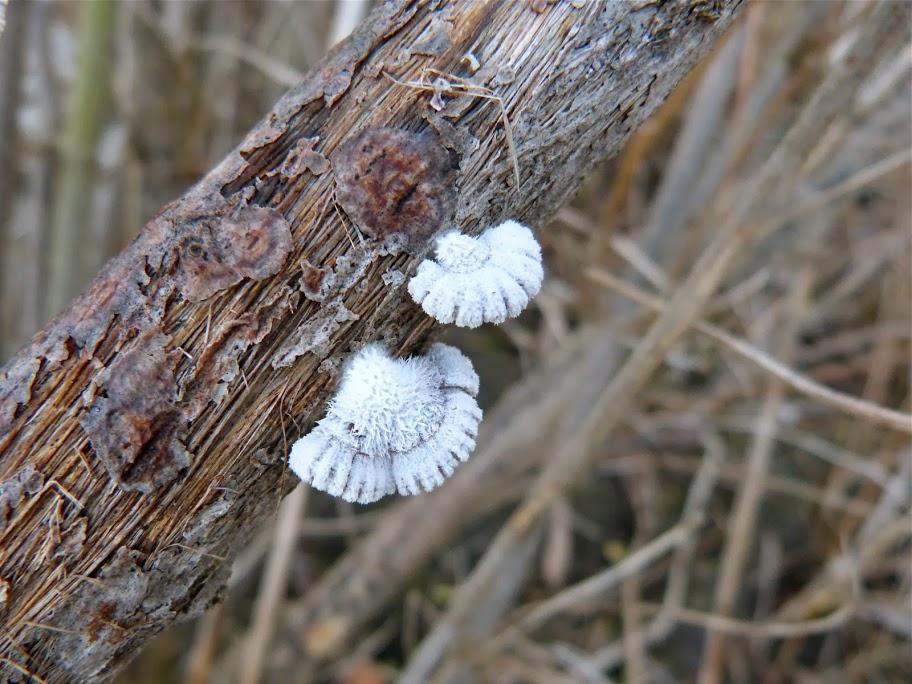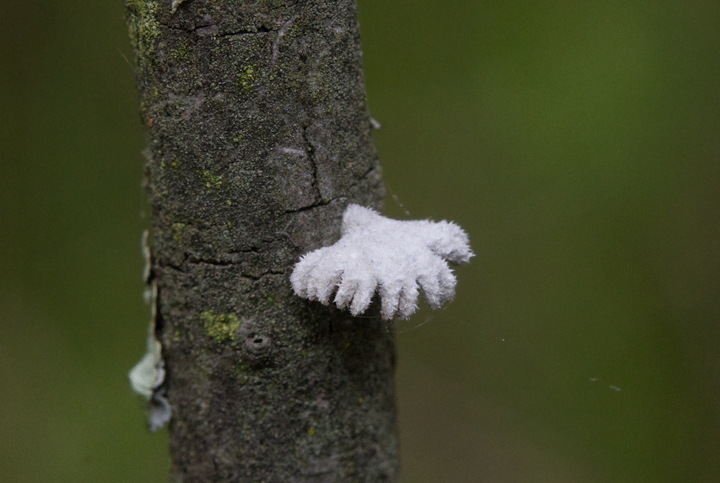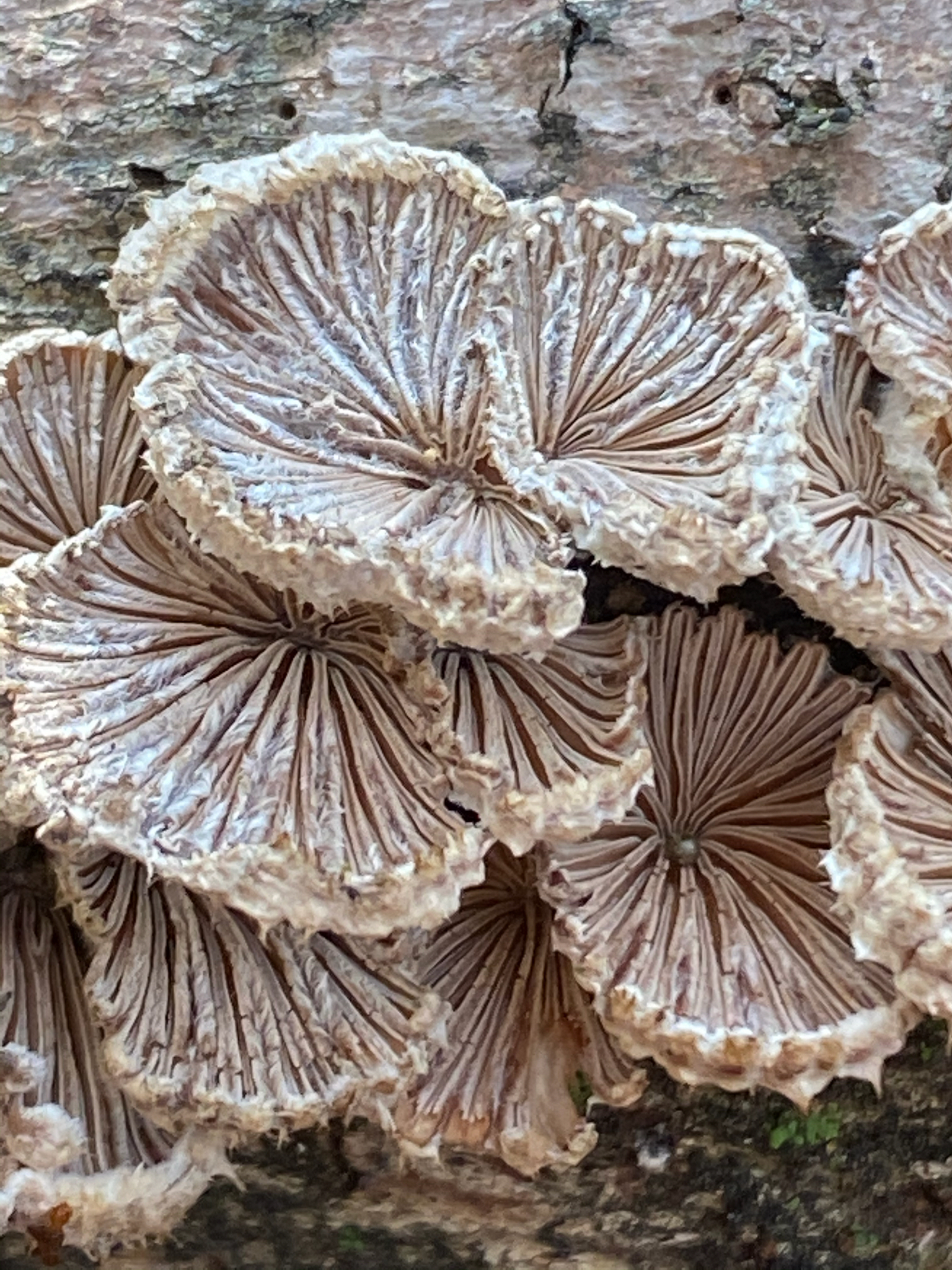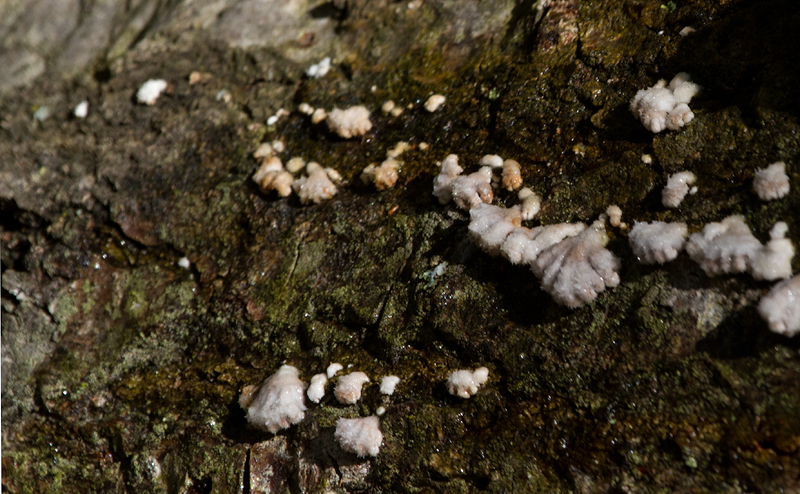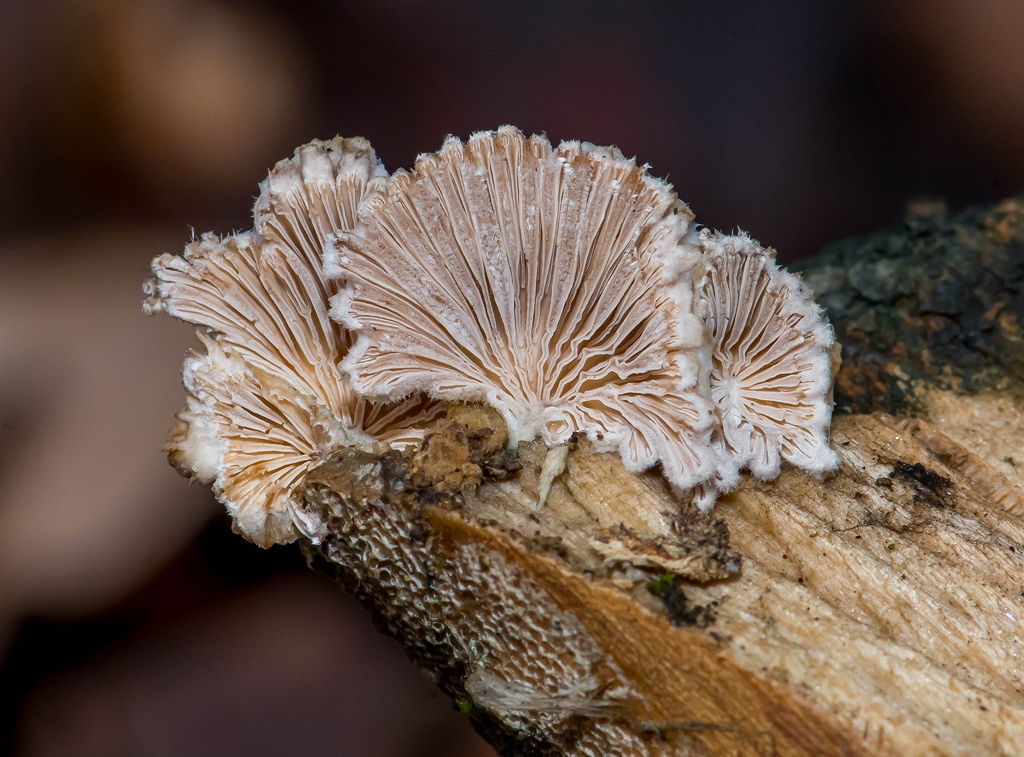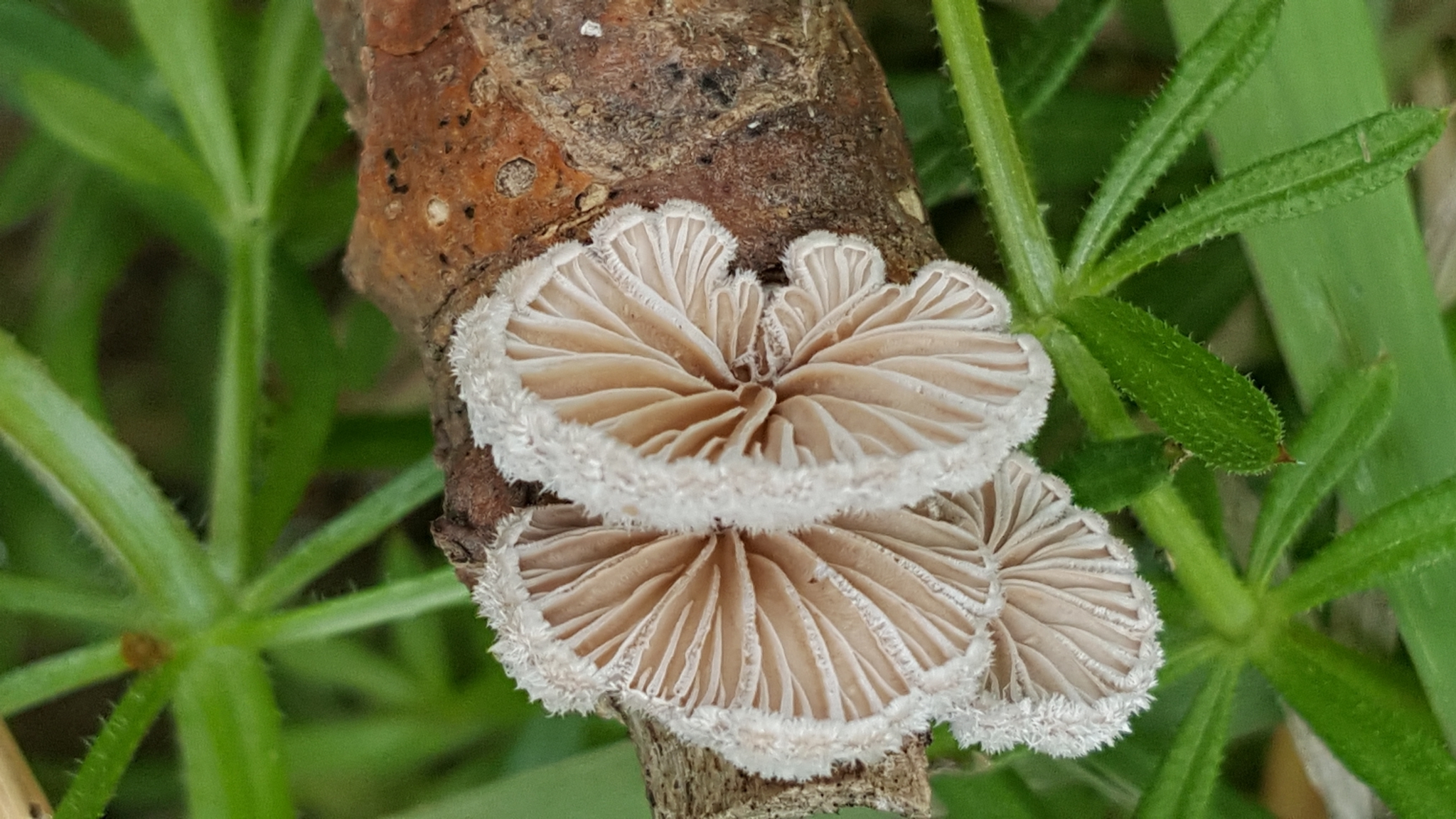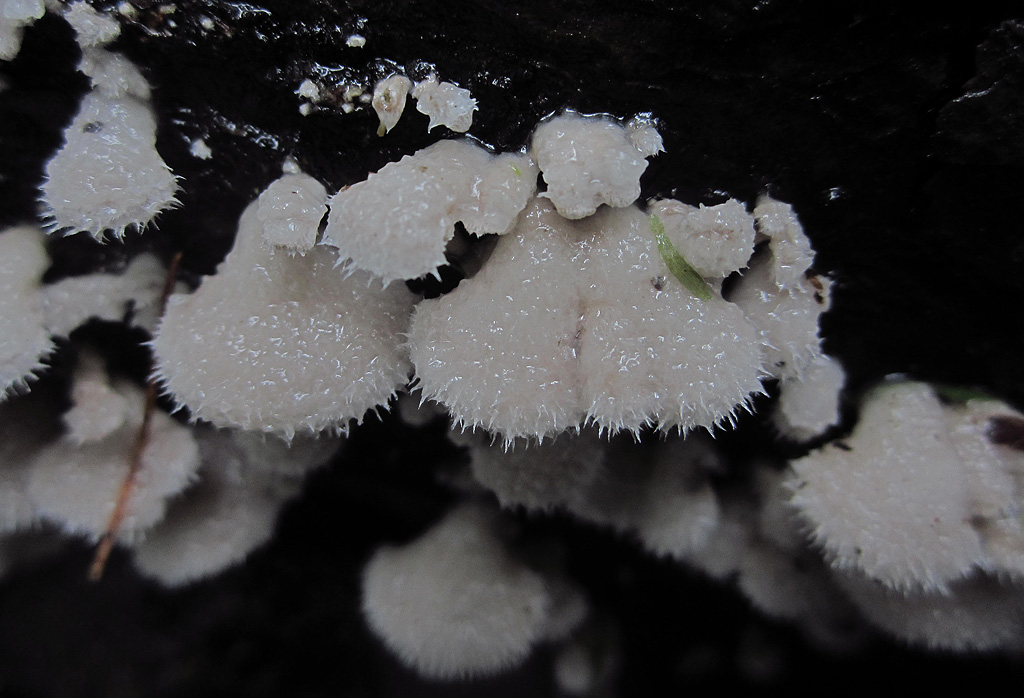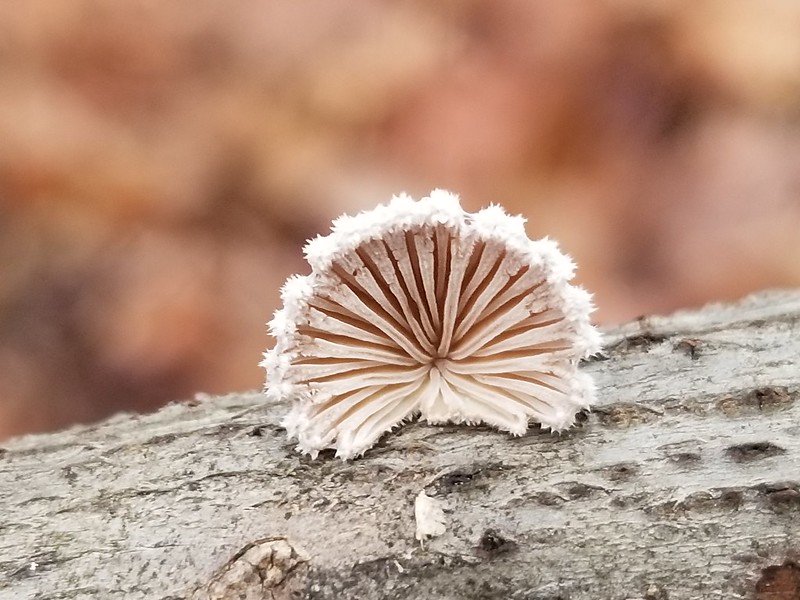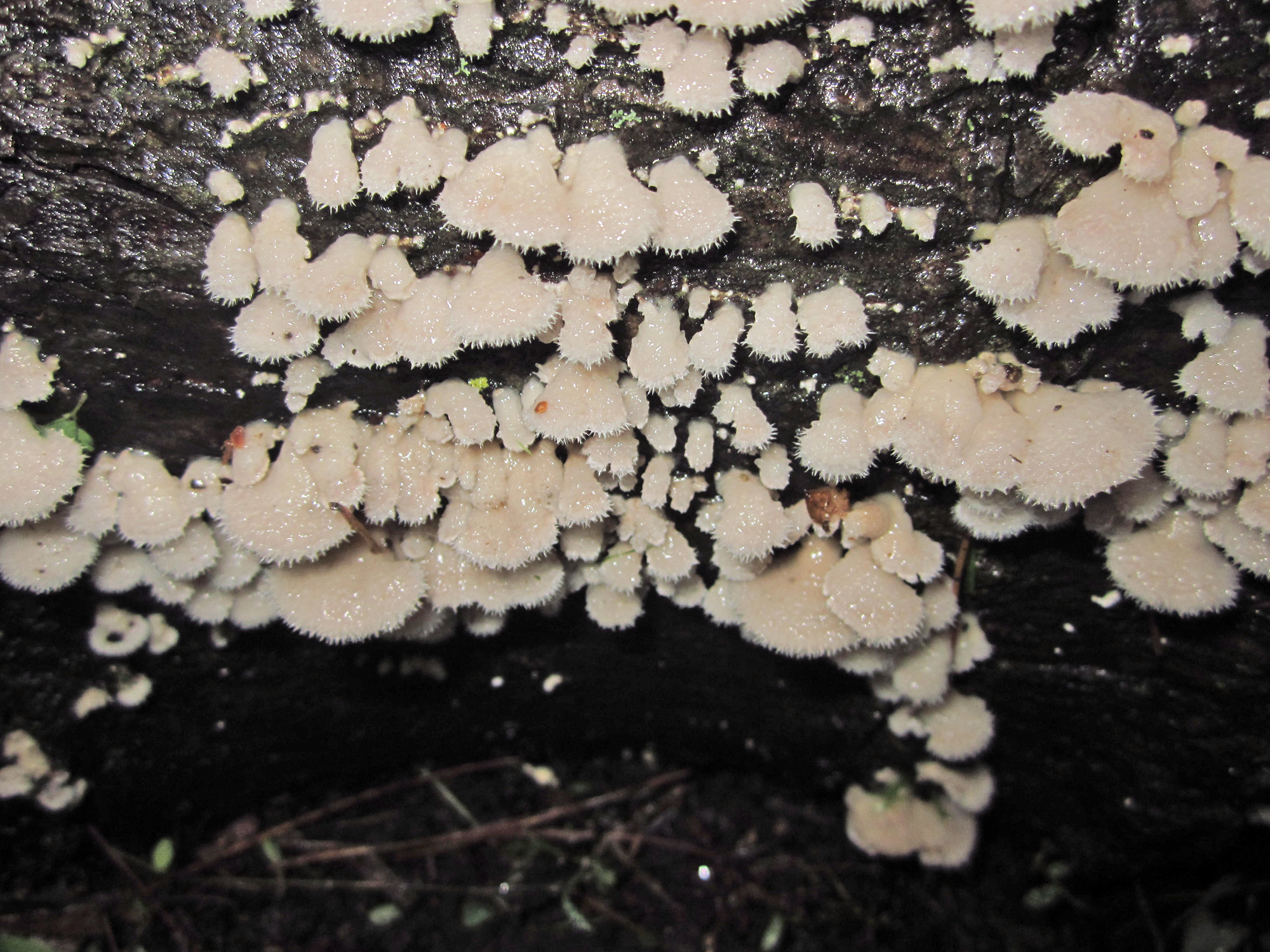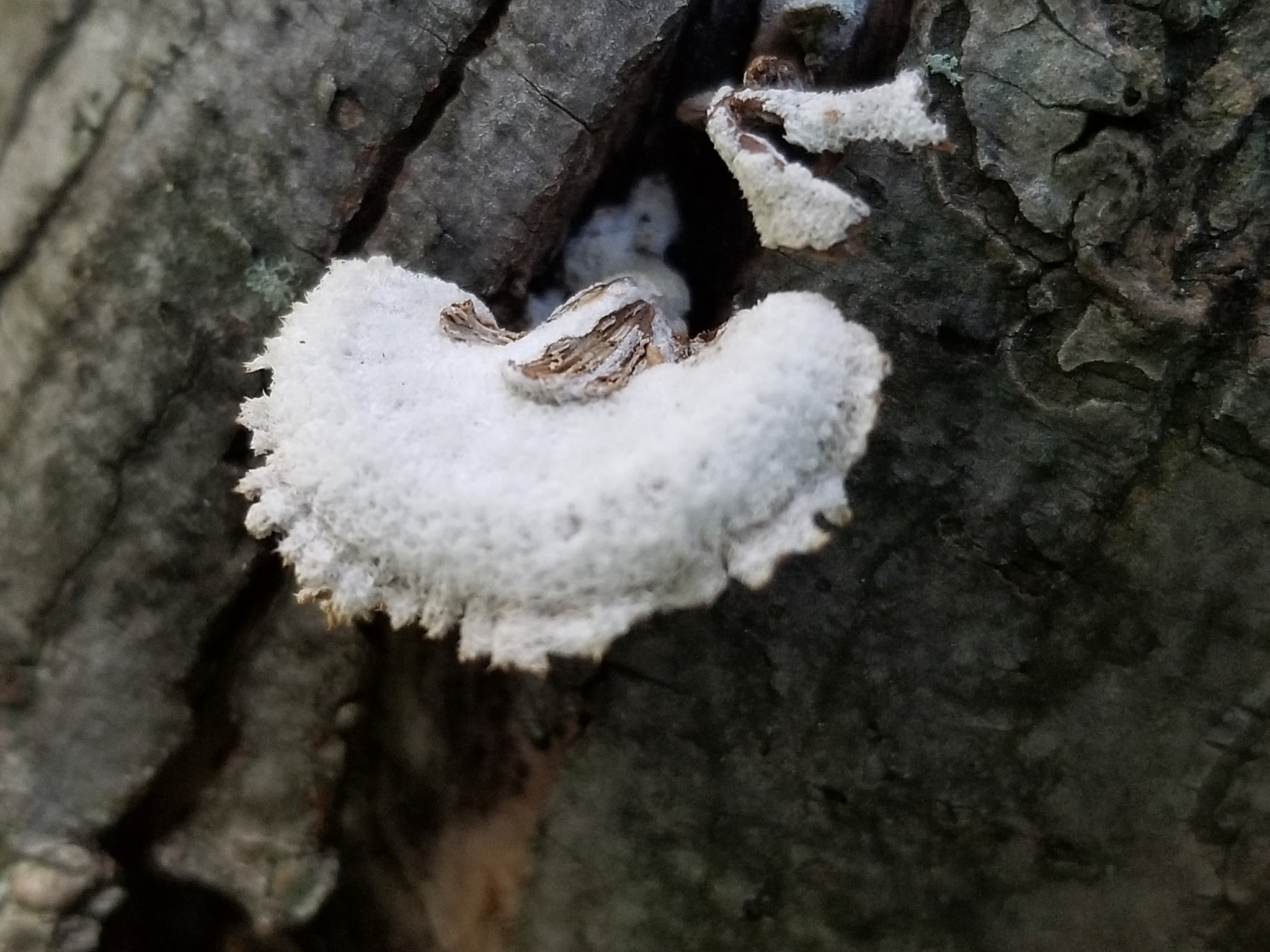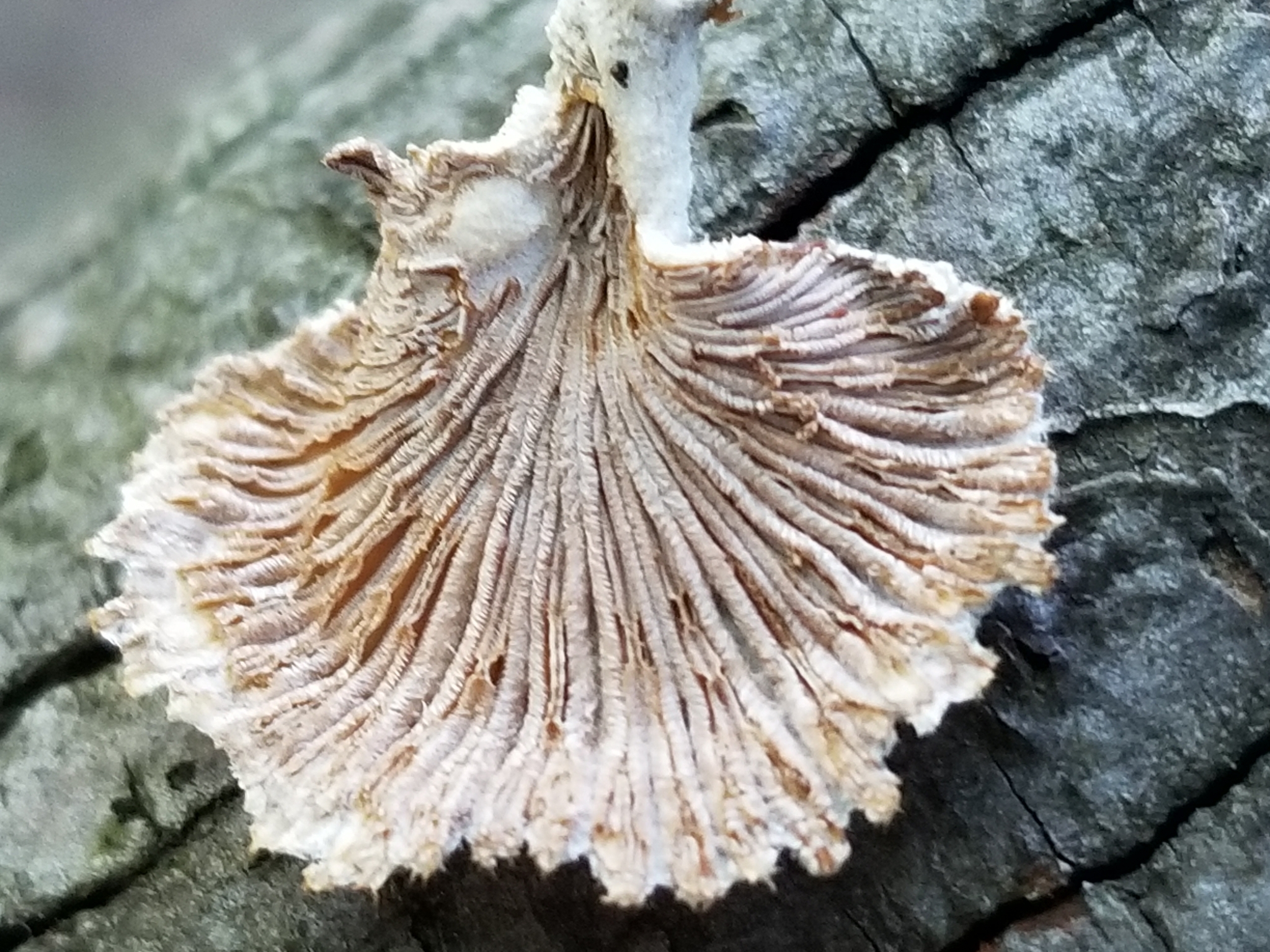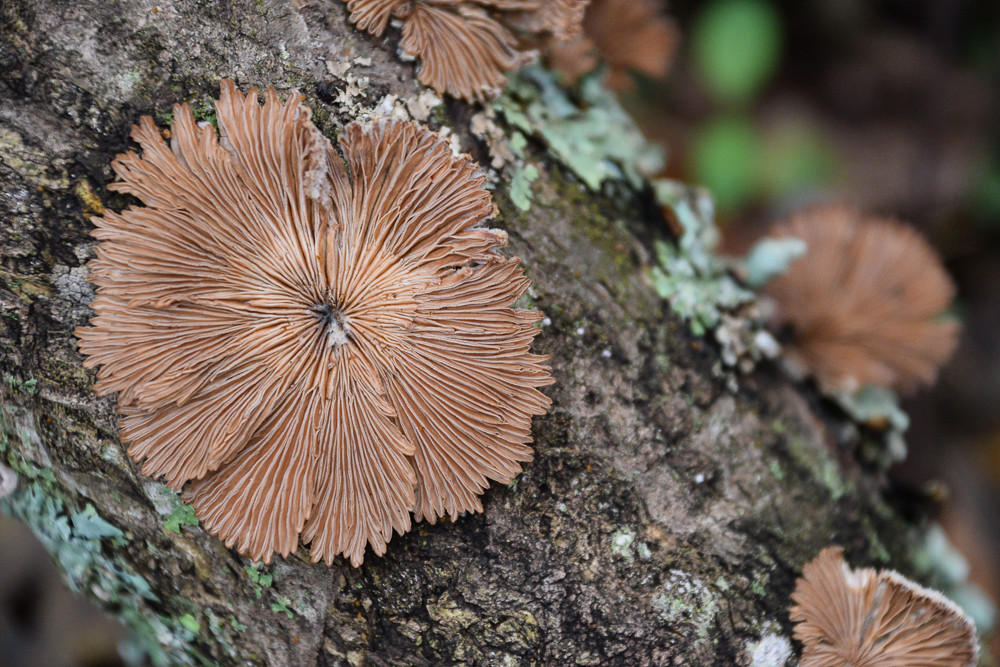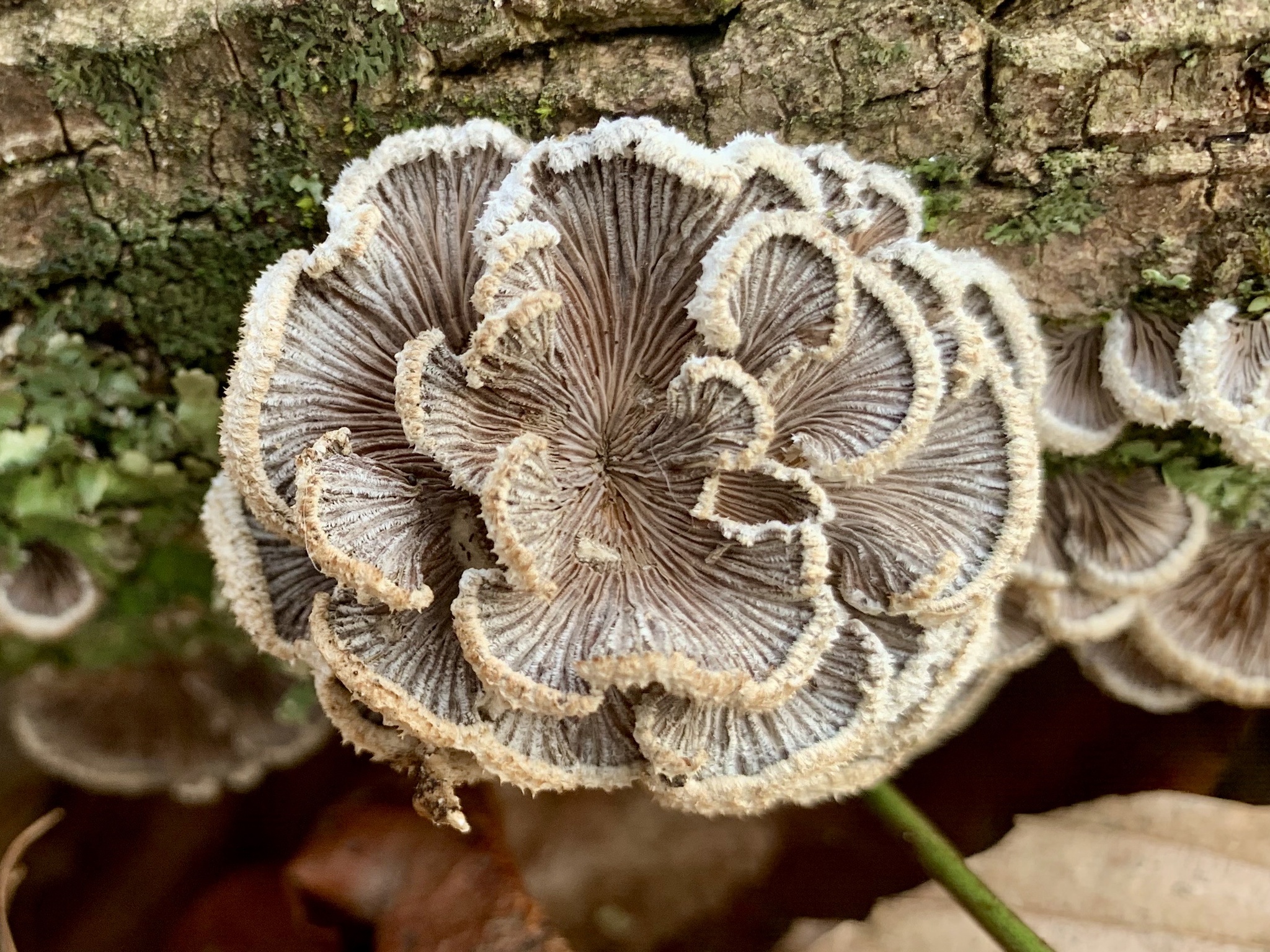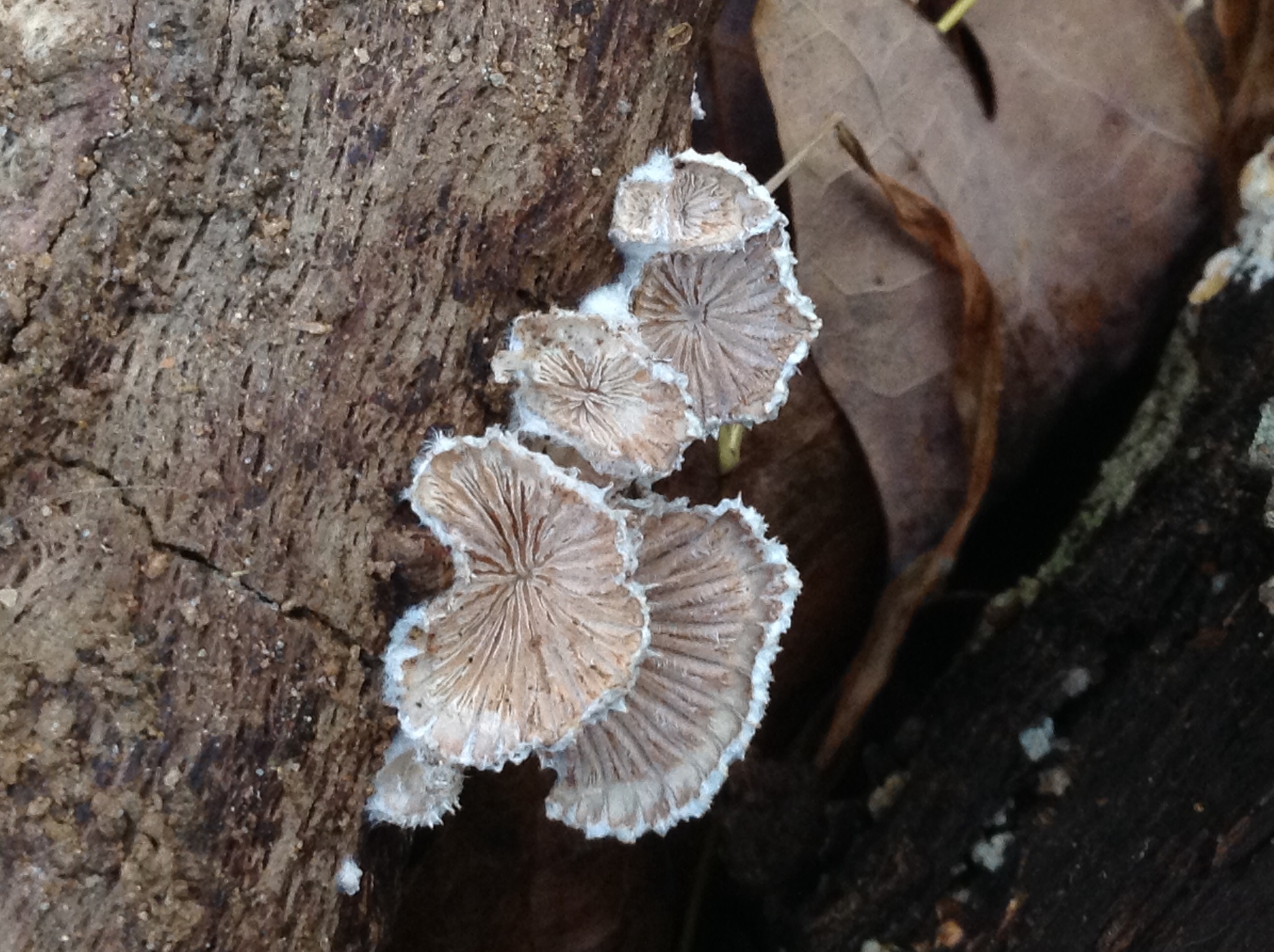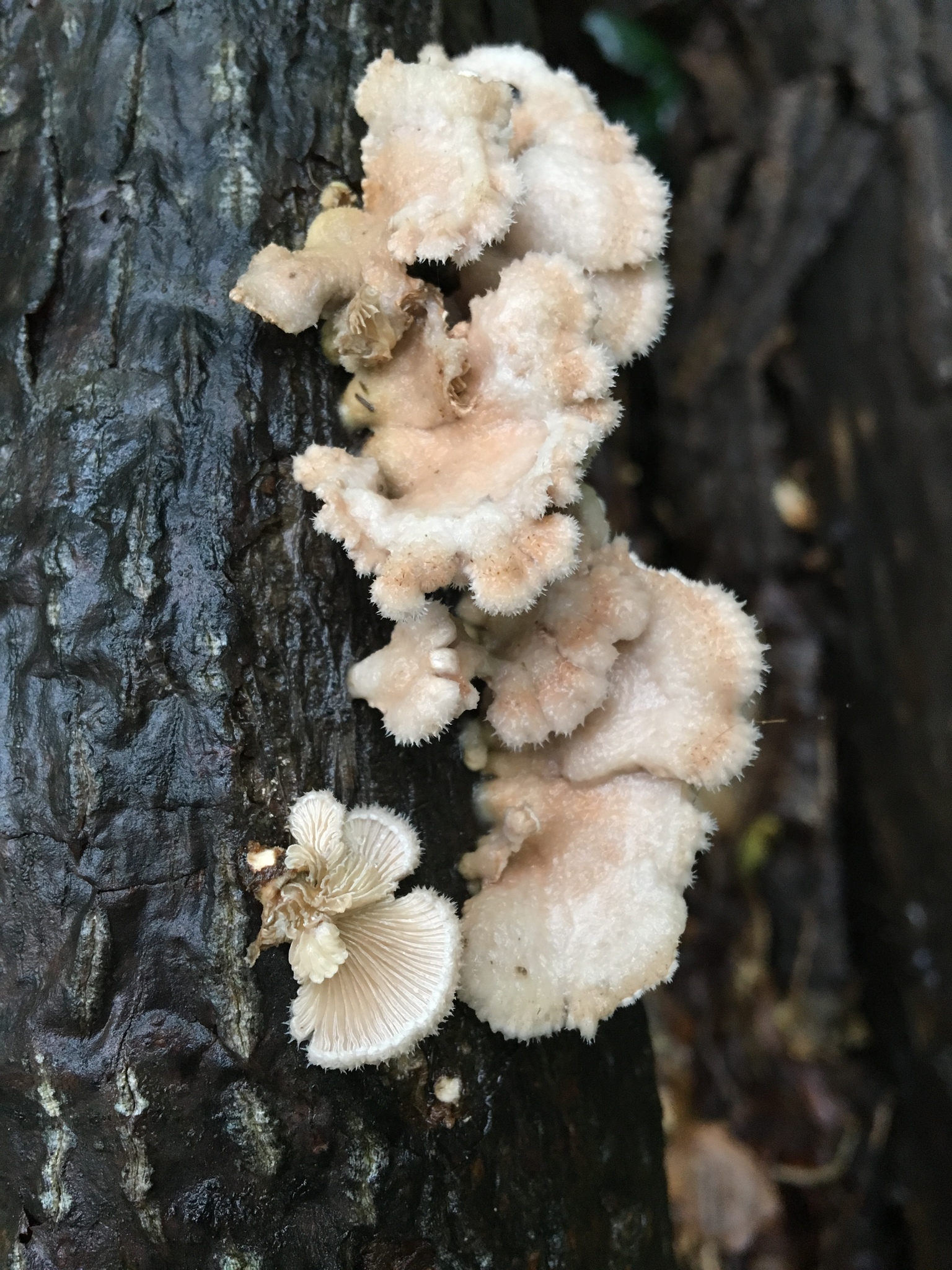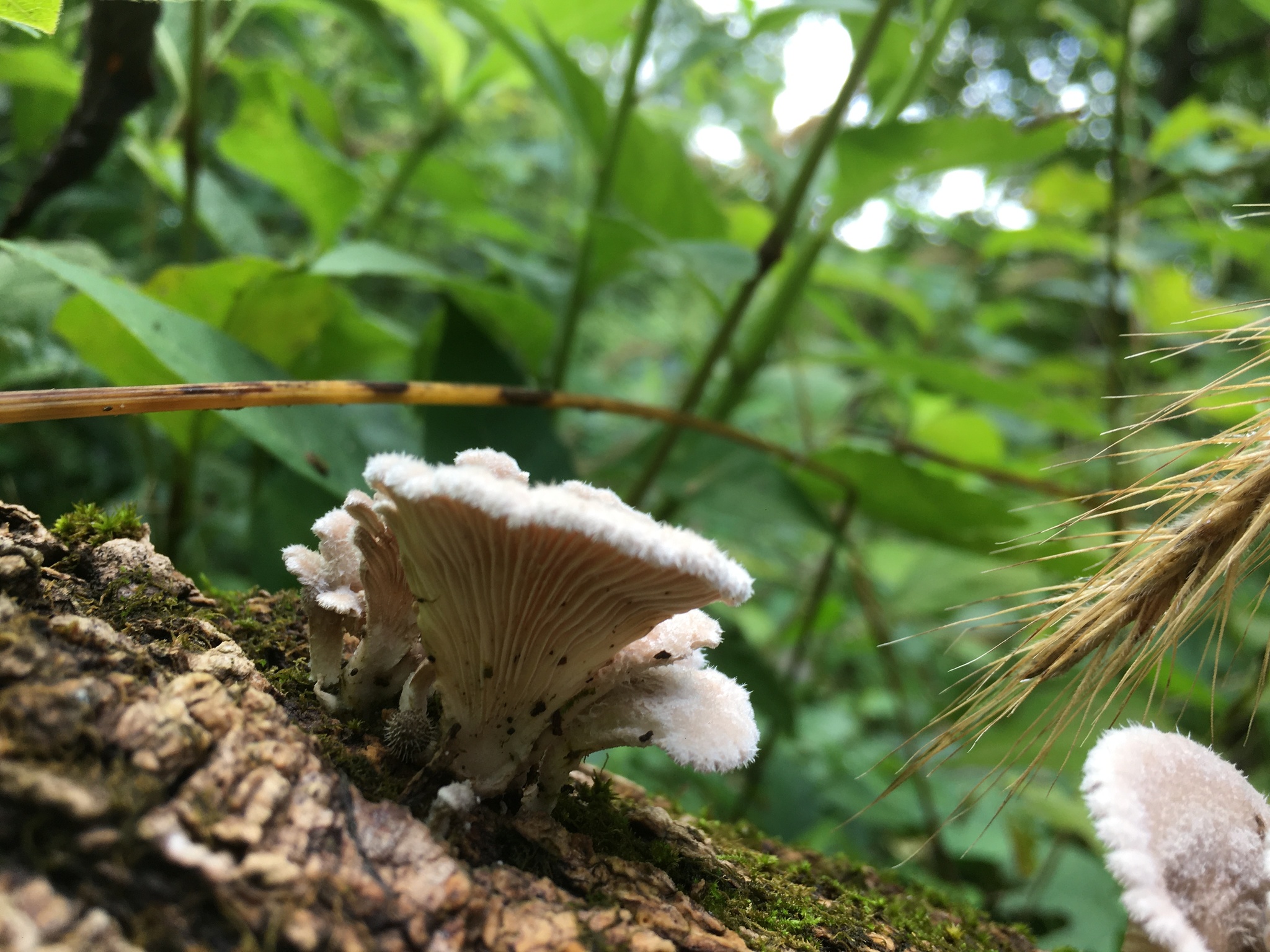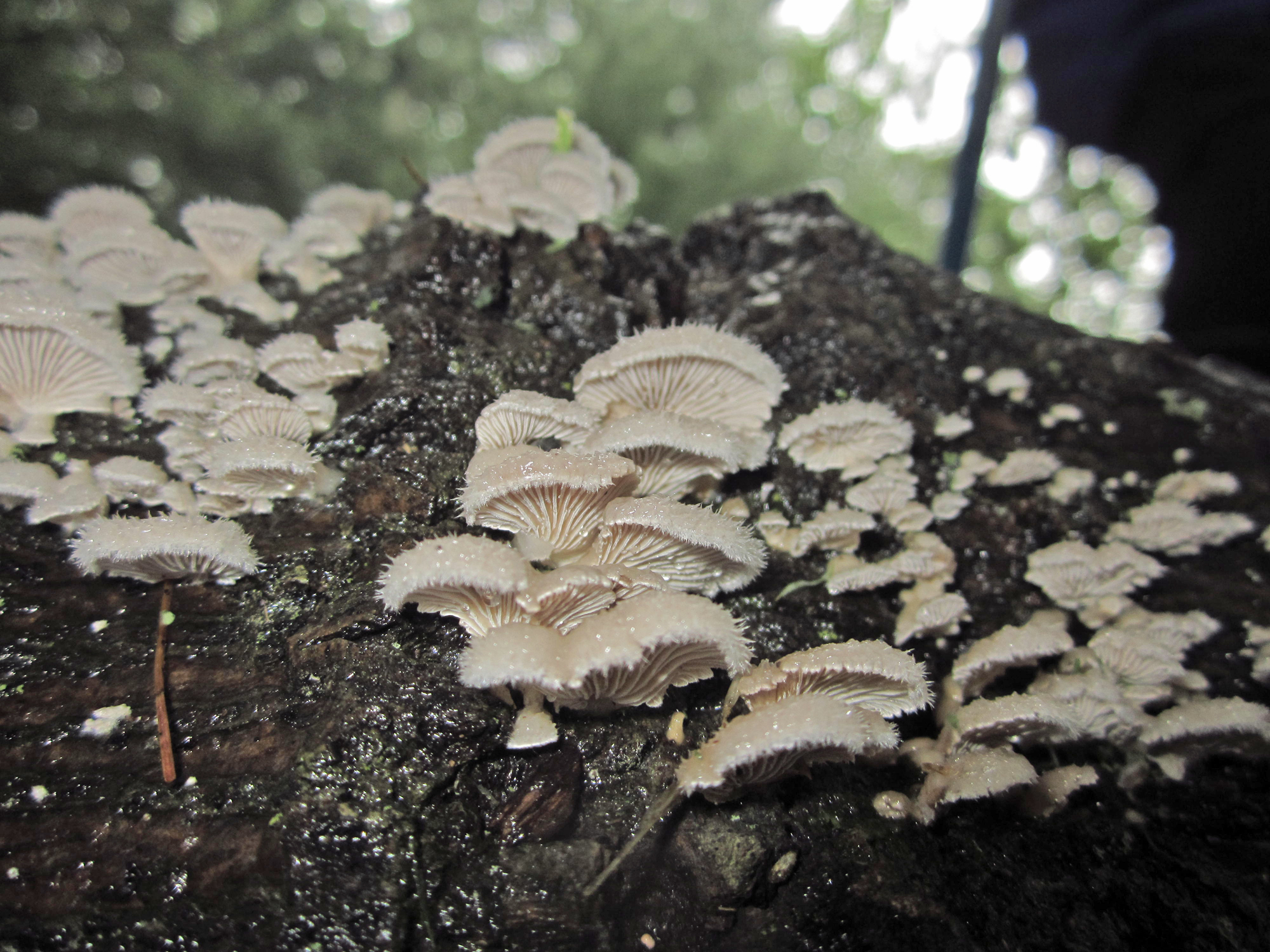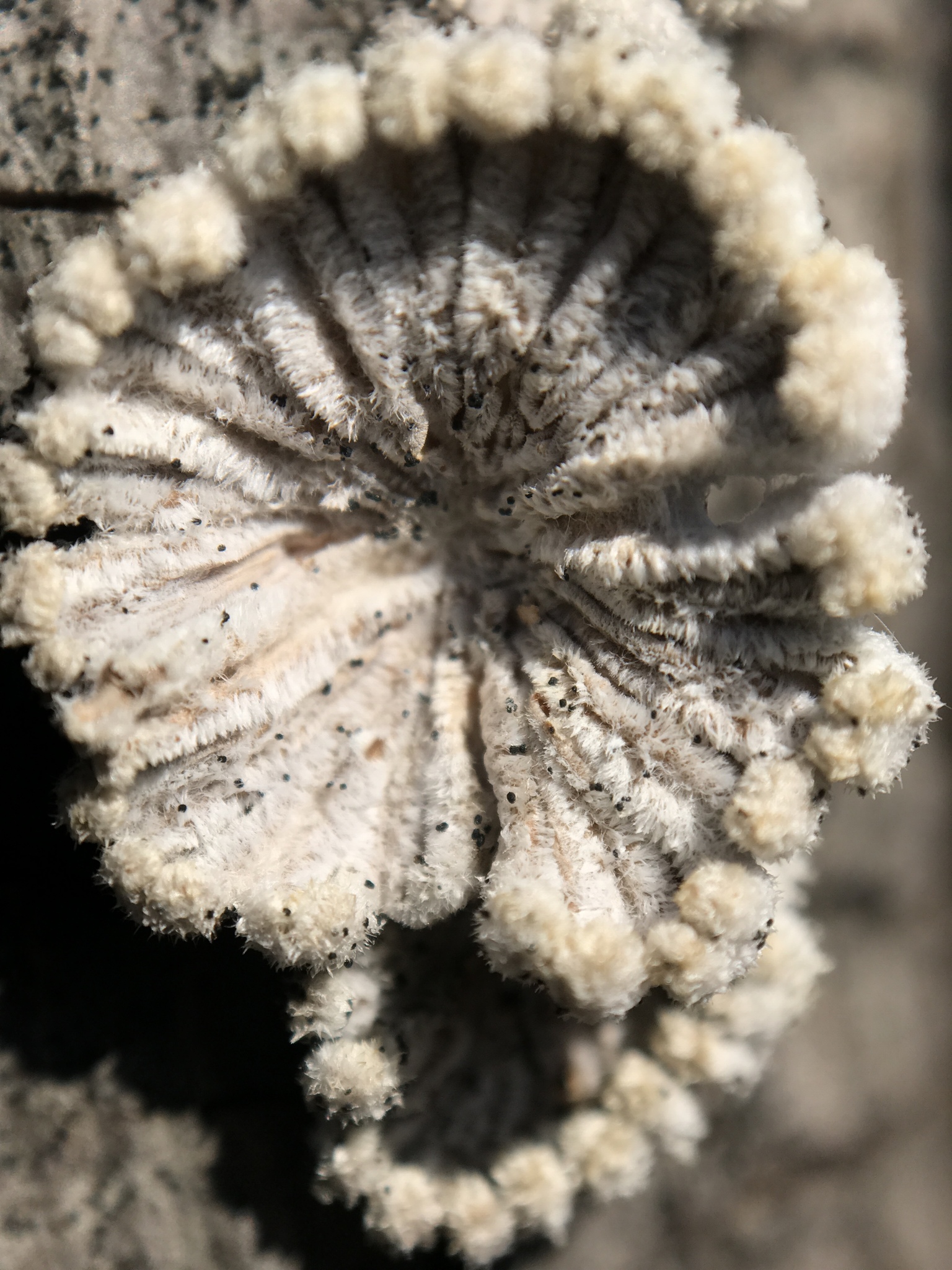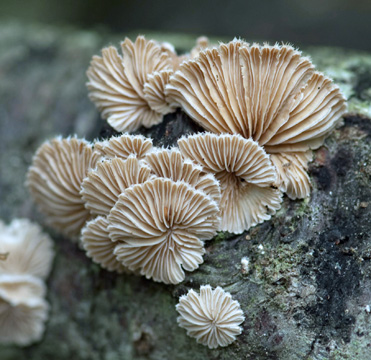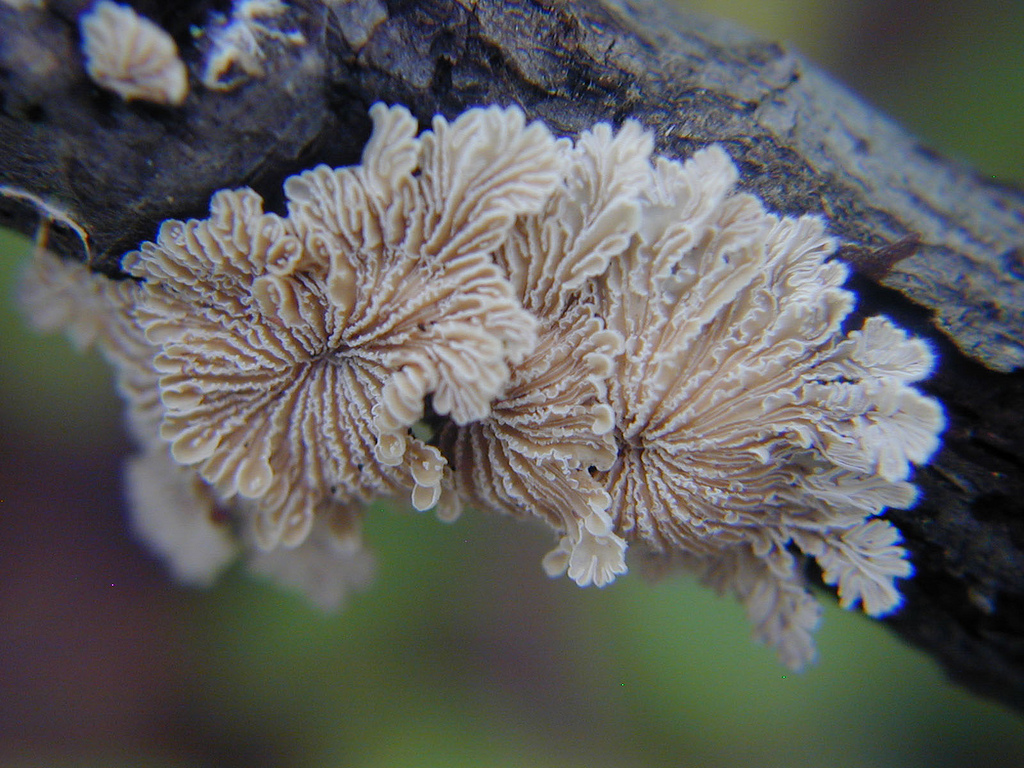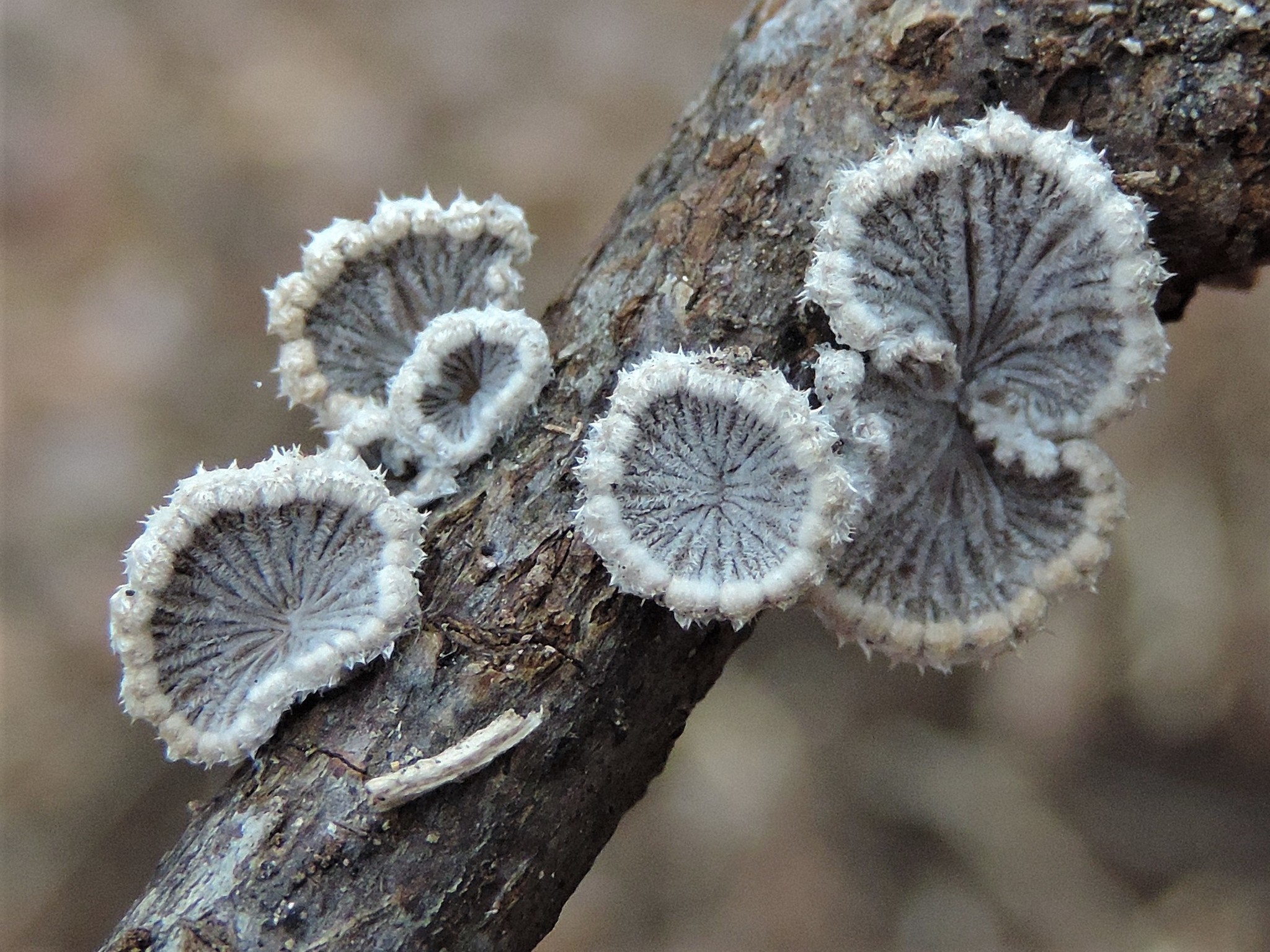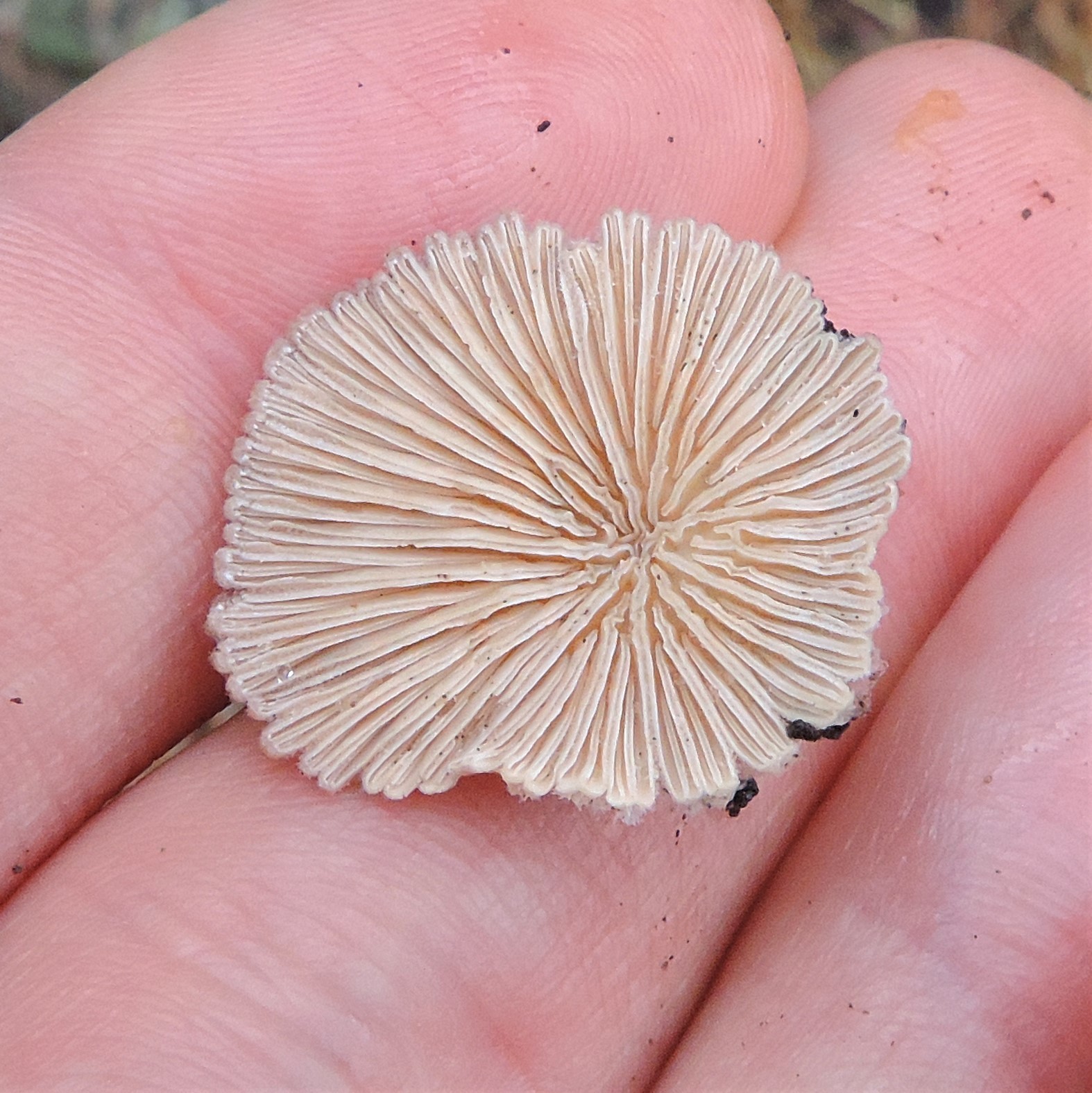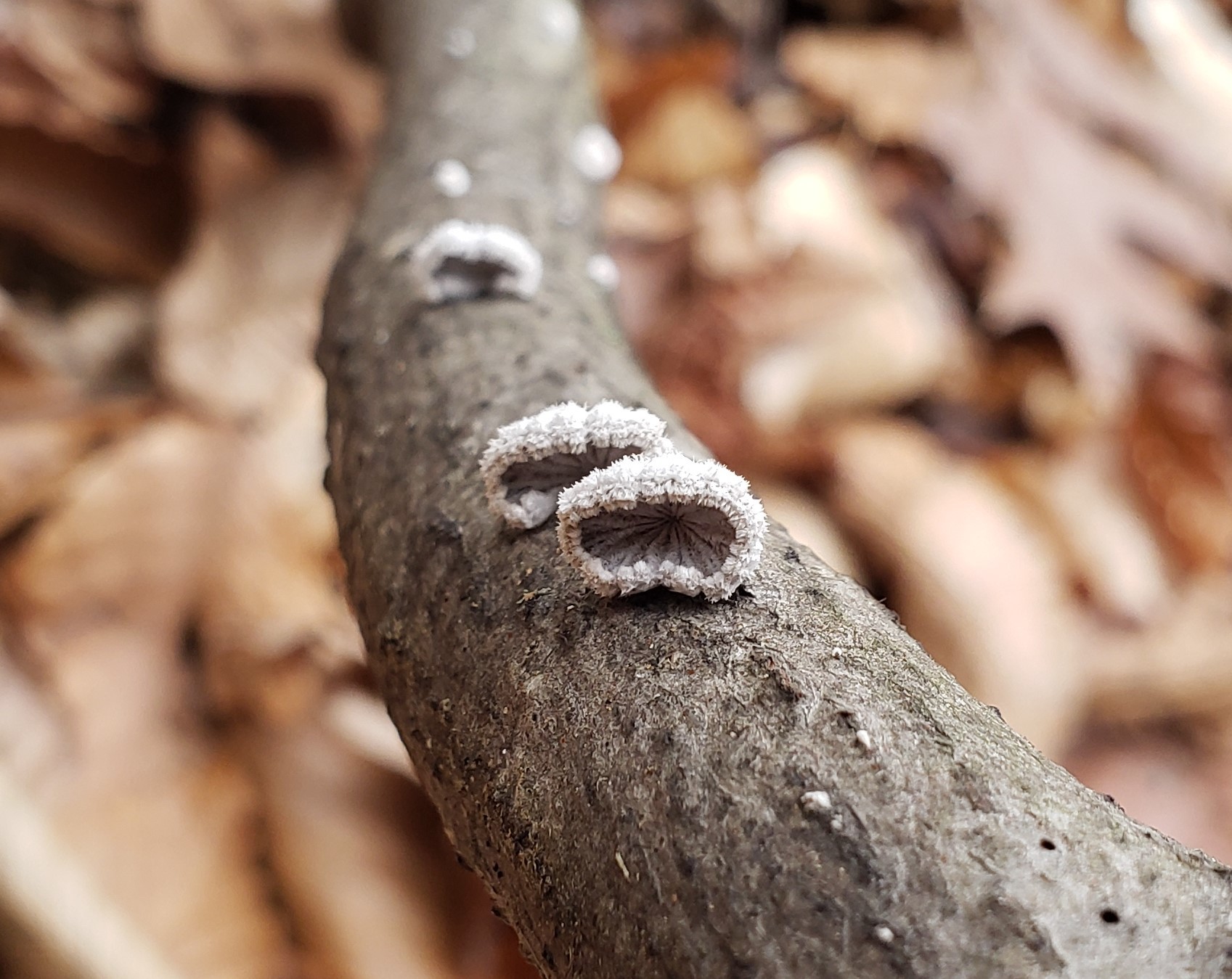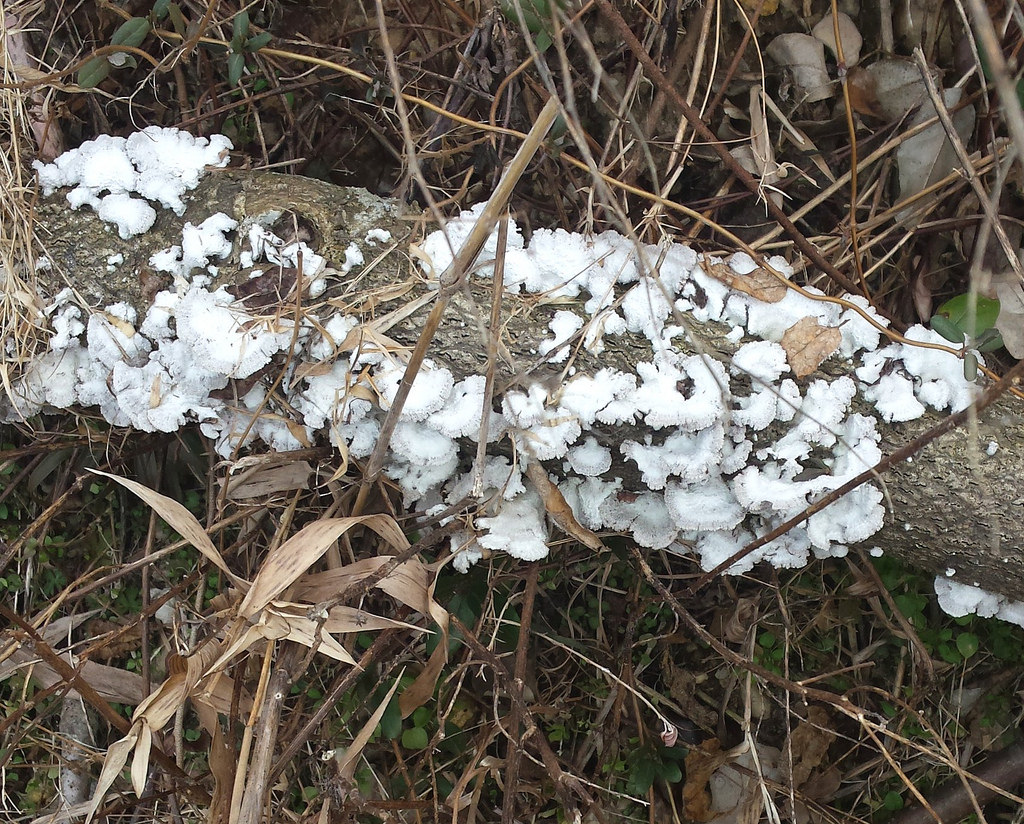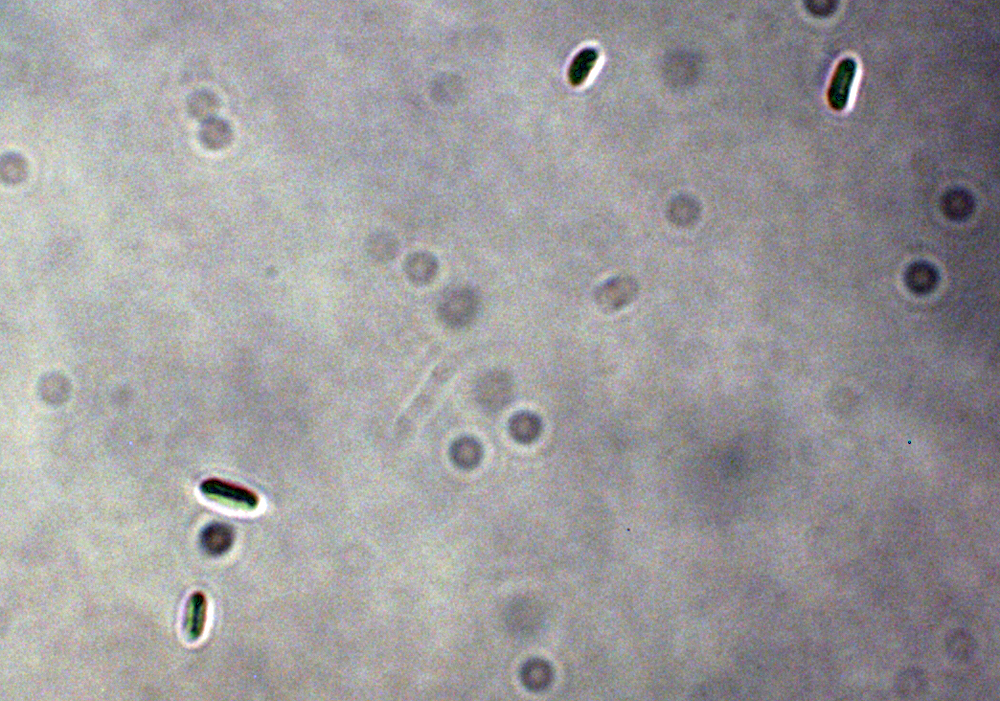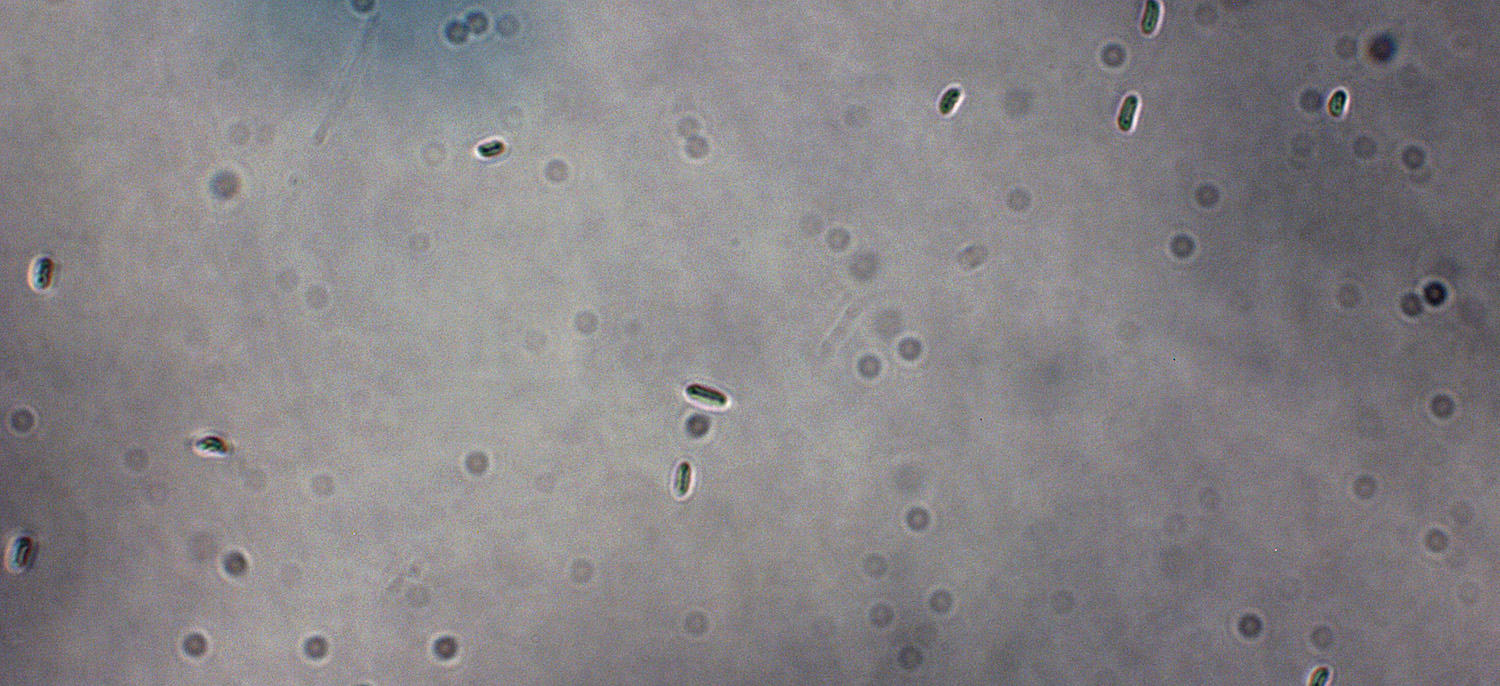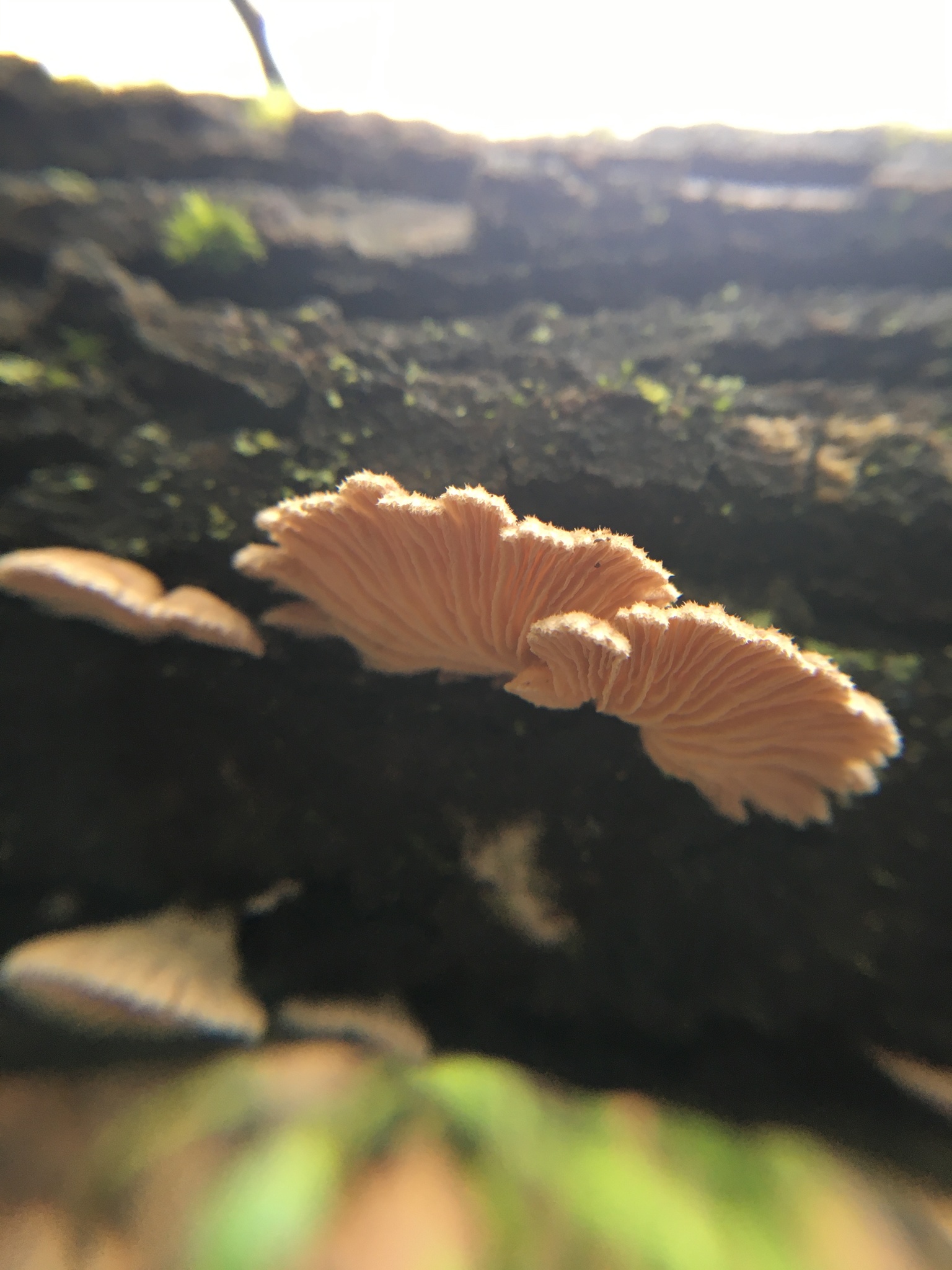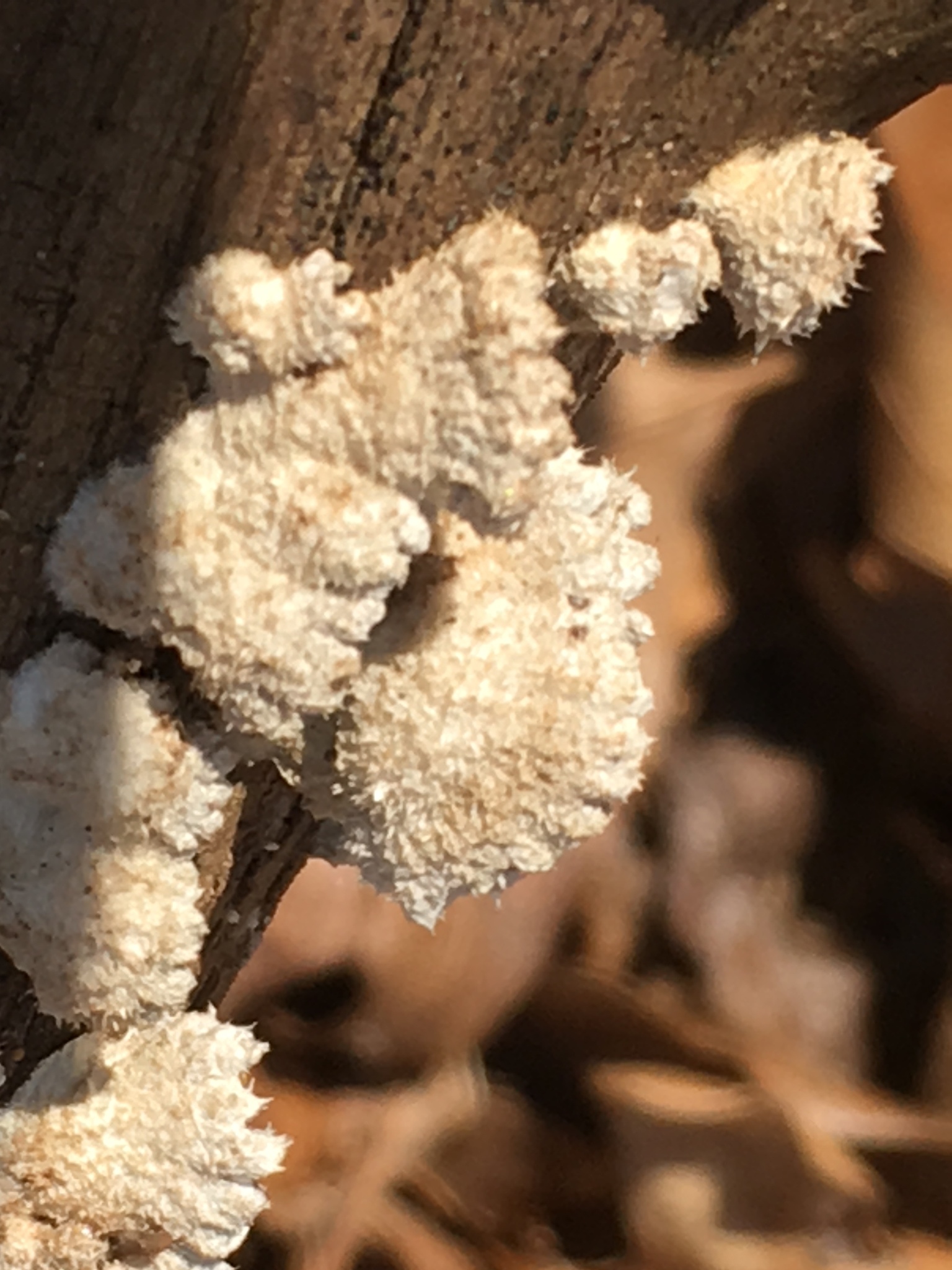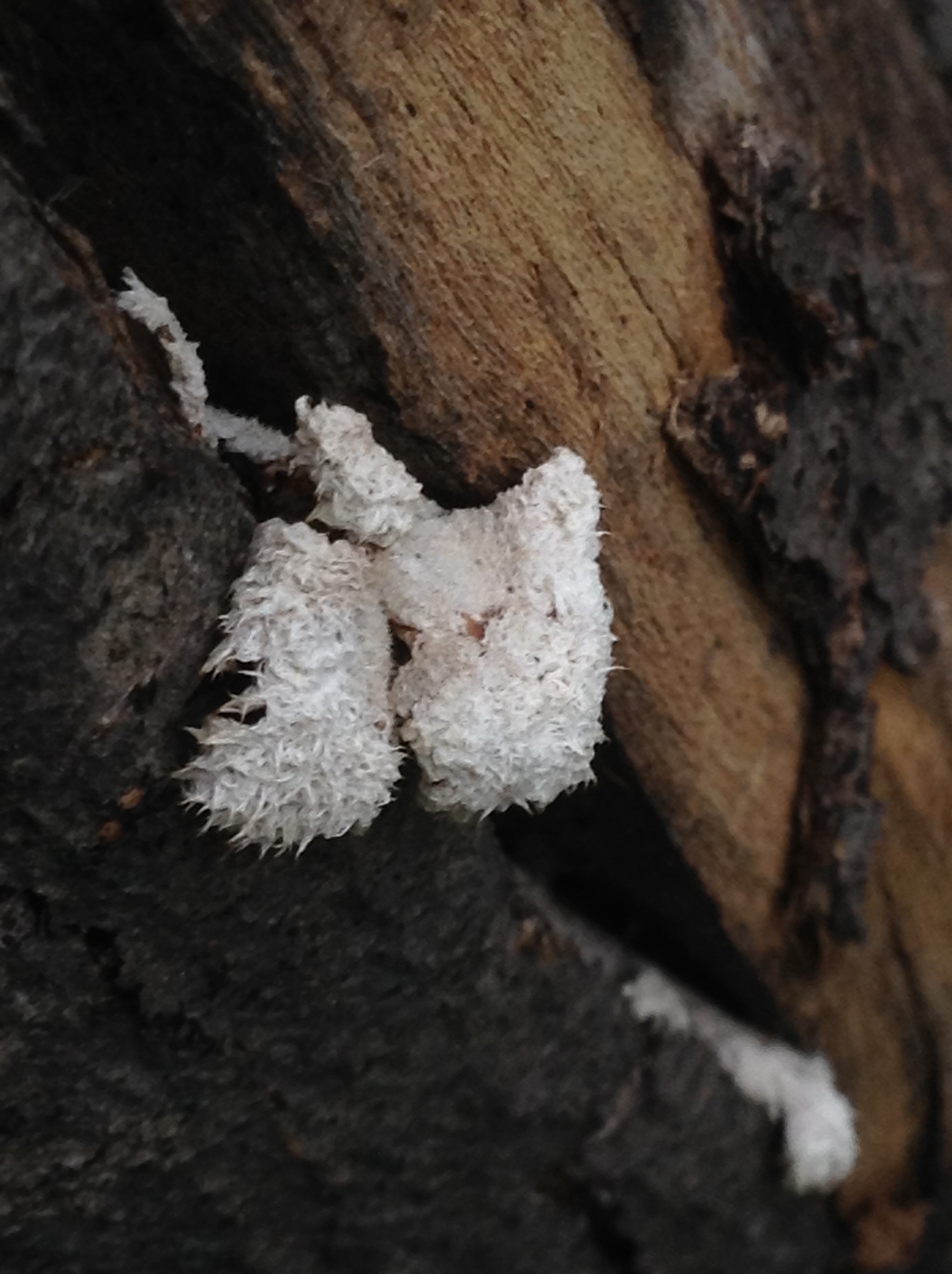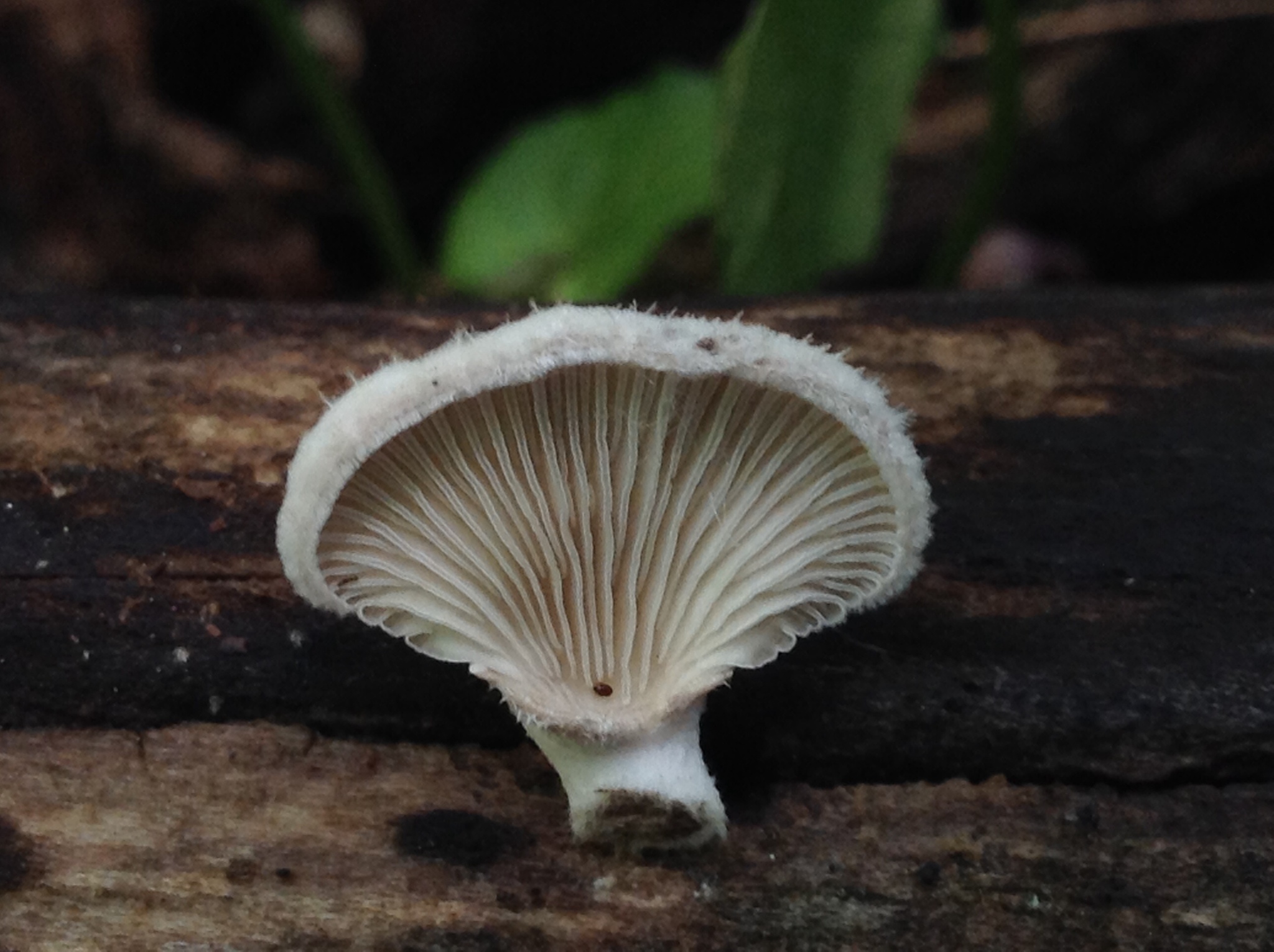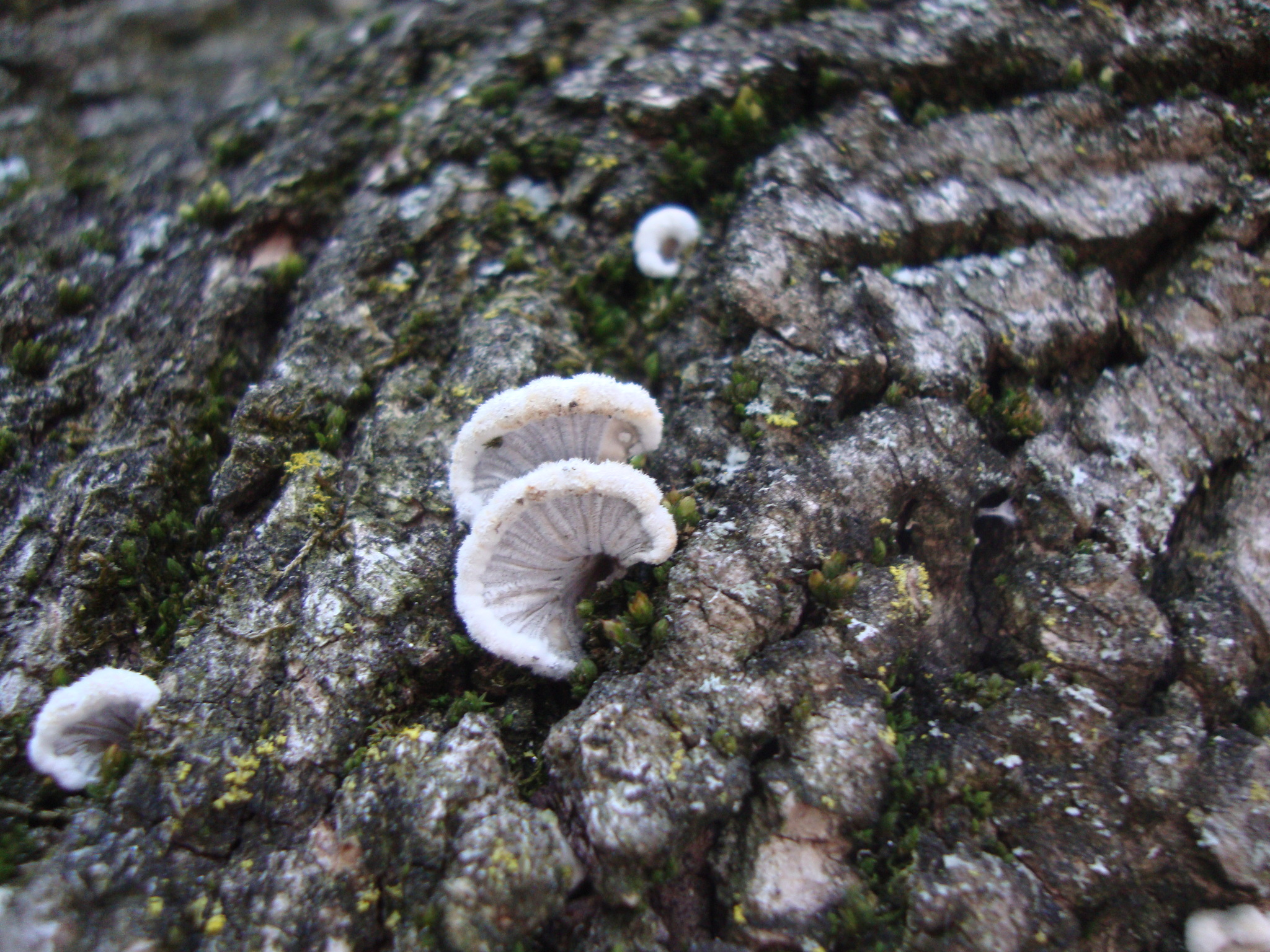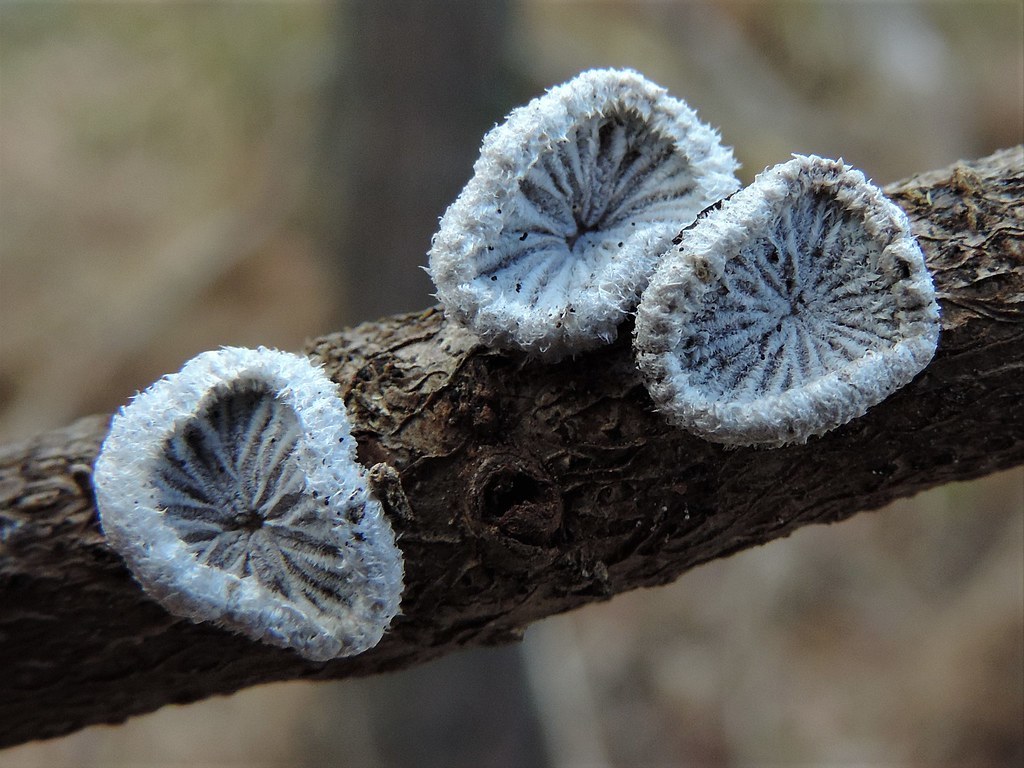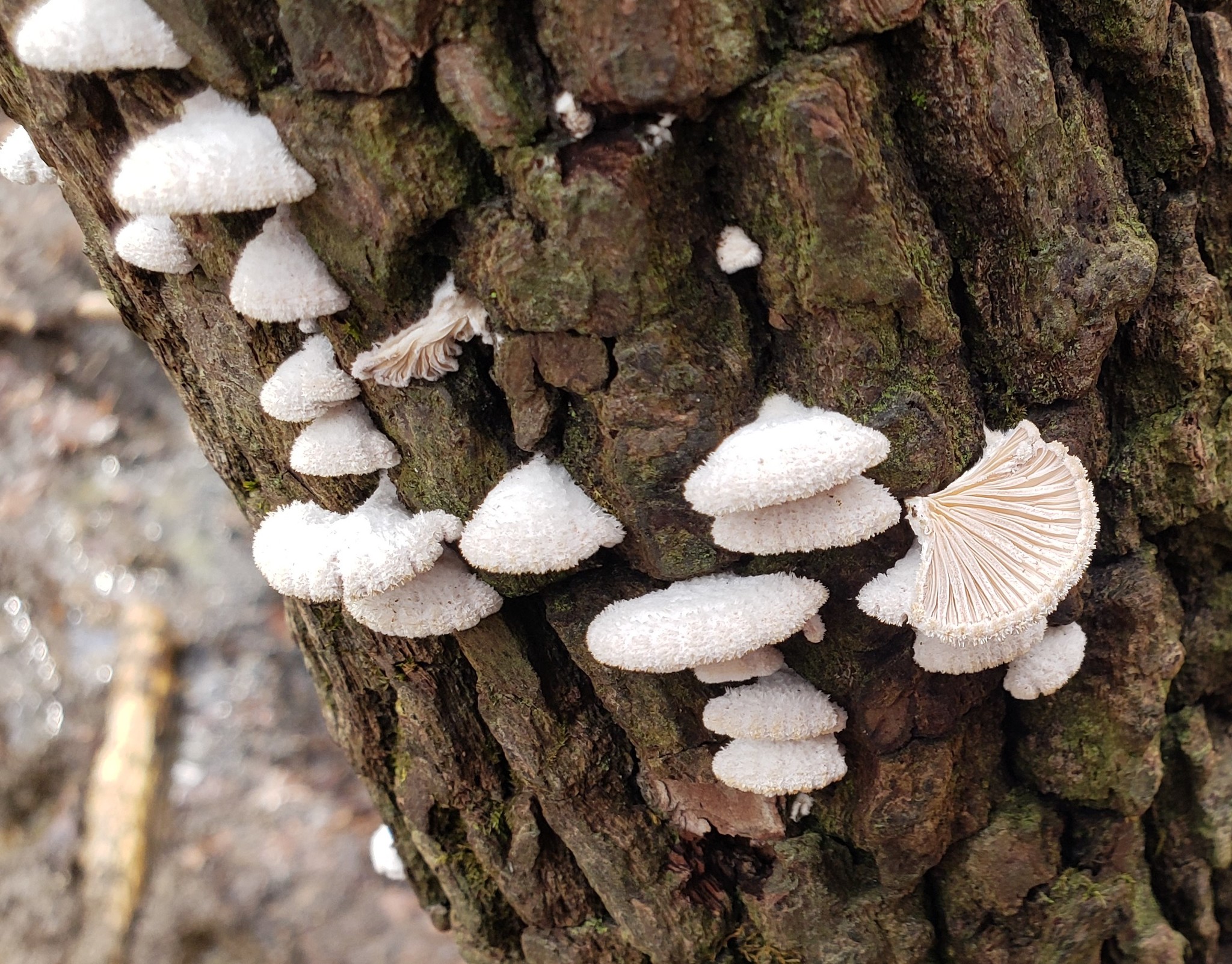Map Snapshot























525 Records
Status
Found scattered or in clusters on decaying hardwoods.
Description
White or grayish-white dry cap covered with dense layer of hairs; inrolled margin. Fertile surface consists of gill-like folds radiating from the attachment point; range in color from white to pink to gray; sometimes serrated; may be split (hence the name). (J. Solem, pers. comm.)
Relationships
Lance Biechele shared this quote from Tom Volk: "In one published account, this mushroom had grown through the soft palate of a child's mouth and was actually forming fruiting bodies (mushrooms) in her sinuses."
Seasonality Snapshot
Source: Wikipedia
| Schizophyllum commune | |
|---|---|

| |
| Scientific classification | |
| Domain: | Eukaryota |
| Kingdom: | Fungi |
| Division: | Basidiomycota |
| Class: | Agaricomycetes |
| Order: | Agaricales |
| Family: | Schizophyllaceae |
| Genus: | Schizophyllum |
| Species: | S. commune
|
| Binomial name | |
| Schizophyllum commune Fr. (1815)
| |
| Synonyms | |
| |
| Schizophyllum commune | |
|---|---|
| Gills on hymenium | |
| No distinct cap | |
| Hymenium attachment is irregular or not applicable | |
| Lacks a stipe or is bare | |
| Spore print is white | |
| Ecology is saprotrophic or parasitic | |
| Edibility is unknown | |
Schizophyllum commune is a species of fungus in the genus Schizophyllum. The mushroom resembles undulating waves of tightly packed corals or a loose Chinese fan. Gillies or split-gills vary from creamy yellow to pale white in colour. The cap is small, 1–4 centimetres (3⁄8–1+5⁄8 in) wide with a dense yet spongey body texture. It is known as the split-gill mushroom because of the unique, longitudinally divided nature of the namesake gills on the underside of the cap. This mushroom is found throughout the world.[1]
It is found in the wild on decaying trees after rainy seasons followed by dry spells where the mushrooms are naturally collected.
Description
[edit]Schizophyllum commune is usually described as a morphological species of global distribution, but some research has suggested that it may be a species complex encompassing several cryptic species of more narrow distribution, as typical of many mushroom-forming Basidiomycota.[2]
The caps are 1–4 centimetres (3⁄8–1+5⁄8 in) wide with white or grayish hairs. They grow in shelf-like arrangements, without stalks.[3] The gills, which produce basidiospores on their surface, split when the mushroom dries out, earning this mushroom the common name split gill. It is common in rotting wood.[4] The mushrooms can remain dry for decades and then revived with moisture.[3]
It has a tetrapolar mating system with each cell containing two mating-type loci (called A and B) that govern different aspects the mating process, leading to 4 possible phenotypes after cell fusion. Each locus codes for a mating type sublocus (α or β) and each type is multi-allelic: the A locus has 9 alleles for the α type and an estimated 32 for its β type, and the B locus has 9 alleles each for both its α and β types. When combined this gives an estimated potential mating type specificities.[5] This does not mean all different mating types are compatible with one another, because compatibility between haploid individuals exists only when for both the A and the B mating-type locus at least the α or β are different. Strains are thus compatible with of the population.[6]
While all mating types can initially fuse with any other mating type, a fertile fruitbody and subsequent spores will result only if both the A and B loci of the merging cells are compatible. If neither the A nor B are compatible the result is normal monokarytic mycelium, and if only one of A or B are compatible, the result is either two mycelia growing in opposite directions (only A compatible) or a "flat" phenotype with no mycelia (only B compatible).[7]
Hydrophobin was first isolated from Schizophyllum commune.[8]
Genetics
[edit]The genome of Schizophyllum commune was sequenced in 2010.[9]
Edibility
[edit]The species was regarded as nonpoisonous by Orson K. Miller Jr. and Hope H. Miller, who considered it to be inedible due to its smallness and toughness.[10] Because the mushrooms absorb moisture, they can expand during digestion. However, some sources indicate that it contains antitumor and antiviral components.[3]
As of 2006, it was widely consumed in Mexico and elsewhere in the tropics. The preference for tough, rubbery mushrooms in the tropics was explained as a consequence of the fact that tender, fleshy mushrooms quickly rot in the hot humid conditions there, making their marketing problematic.[11]
In Northeast India, in the state Manipur, it is known as kanglayen and one of the favourite ingredients for Manipuri-style pancakes called paaknam. In Mizoram, the local name is pasi (pa means mushroom, si means tiny) and it is one of the highest rated edible mushrooms among the Mizo community. [citation needed]
As a pathogen
[edit]It may be a common cause of fungal infections and related diseases, most commonly that of the lungs.[12] They have also been reported to cause sinusitis and allergic reactions.[3]
Etymology
[edit]Schizophyllum is derived from [the Greek] Schíza meaning split because of the appearance of radial, centrally split, gill like folds; commune means common or shared ownership or ubiquitous.[13]
Gallery
[edit]-
Schizophyllum commune in the Santa Cruz Mountains of California
-
Schizophyllum commune Elk Grove, Illinois
-
Schizophyllum commune in Missouri, US
-
Schizophyllum commune Grand Rapids, Michigan
-
Schizophyllum commune in Estonia
References
[edit]- ^ Kuo, M. (2003). "Schizophyllum commune". Mushroom Expert. Retrieved 18 February 2020.
- ^ Taylor, John; Turner, Elizabeth; Townsend, Jeffrey; Dettman, Jeremy; Jacobson, David (2006). "Eukaryotic microbes, species recognition and the geographic limits of species: examples from the kingdom Fungi". Phil. Trans. R. Soc. B. 361 (1475): 1947–1963. doi:10.1098/rstb.2006.1923. PMC 1764934. PMID 17062413.
- ^ a b c d Davis, R. Michael; Sommer, Robert; Menge, John A. (2012). Field Guide to Mushrooms of Western North America. Berkeley: University of California Press. pp. 131–132. ISBN 978-0-520-95360-4. OCLC 797915861.
- ^ Guarro, J; Genéj; Stchigel, Am (Jul 1999), "Developments in Fungal Taxonomy", Clinical Microbiology Reviews, 12 (3): 454–500, doi:10.1128/CMR.12.3.454, ISSN 0893-8512, PMC 100249, PMID 10398676
- ^ Kothe, Erika (1996). "Tetrapolar fungal mating types: Sexes by the thousands". FEMS Microbiology Reviews. 18 (1): 65–87. doi:10.1016/0168-6445(96)00003-4. PMID 8672296.
- ^ Kothe, Erika (1996). "Tetrapolar fungal mating types: Sexes by the thousands". FEMS Microbiology Reviews. 18 (1): 65–87. doi:10.1016/0168-6445(96)00003-4. PMID 8672296.
- ^ Vuilleumier, Séverine (2013). "Transitions from Reproductive Systems Governed by Two Self-Incompatible Loci to One in Fungi". Evolution. 67 (2): 501–516. doi:10.1111/j.1558-5646.2012.01783.x. PMID 23356621.
- ^ Wessels, Jgh.; De Vries, Omh.; Asgeirsdottir, S. A.; Schuren, Fhj. (1991-08-01). "Hydrophobin Genes Involved in Formation of Aerial Hyphae and Fruit Bodies in Schizophyllum". The Plant Cell. 3 (8): 793–799. doi:10.1105/tpc.3.8.793. ISSN 1040-4651. PMC 160046. PMID 12324614.
- ^ Robin A Ohm; De Jong, JF; Lugones, LG; Aerts, A; Kothe, E; Stajich, JE; De Vries, RP; Record, E; et al. (Jul 2010), "Genome sequence of the model mushroom Schizophyllum commune", Nature Biotechnology, 28 (9): 957–63, doi:10.1038/nbt.1643, PMID 20622885
- ^ Miller Jr., Orson K.; Miller, Hope H. (2006). North American Mushrooms: A Field Guide to Edible and Inedible Fungi. Guilford, CN: FalconGuide. p. 139. ISBN 978-0-7627-3109-1.
- ^ Ruán-Soto, F.; Garibay-Orijel, R.; Cifuentes, J. (2006). "Process and dynamics of traditional selling of wild edible mushrooms in tropical Mexico". Journal of Ethnobiology and Ethnomedicine. 2 (1): 3. doi:10.1186/1746-4269-2-3. PMC 1360659. PMID 16393345.
- ^ Chowdhary, A; Kathuria, S; Agarwal, K; Meis, JF (Nov 2014). "Recognizing filamentous basidiomycetes as agents of human disease: A review". Med Mycol. 52 (8): 782–97. doi:10.1093/mmy/myu047. PMID 25202126.
- ^ Mahajan, Monika (March 2022). "Etymologia: Schizophyllum commune". Emerg. Infect. Dis. 28 (3): 725. doi:10.3201/eid2803.211051. PMC 8888233. S2CID 247097577.
Citing public domain text from the CDC.
External links
[edit] Media related to Schizophyllum commune at Wikimedia Commons
Media related to Schizophyllum commune at Wikimedia Commons Data related to Schizophyllum commune at Wikispecies
Data related to Schizophyllum commune at Wikispecies- "Schizophyllum commune", MykoWeb
- "Tom Volk's Fungus of the Month for February 2000
